














The FAA released a rule in late November that will extend the duration of aircraft registration certificates from three years to seven years. According to the direct final rule, aircraft owners will be required to confirm their registration information and renew their certificates every seven years unless an event or circumstance requires a new registration before that time. If the agency determines that the registration information is inaccurate, an owner may be required to submit new registration forms.
The final rule further addresses other areas surrounding aircraft registration, including removing a requirement that the agency issue a letter extending temporary authorization if a registration has not been issued or denied within 90 days of the application. It also removes obsolete regulations addressing re-registration.
The agency in 2010 mandated that aircraft owners re-register their aircraft every three years. Before then, the registration period was indefinite, but with the stipulation that owners keep their registrations up-to-date. However, the agency found that owners failed to do so, creating numerous outdated registrations and raising concerns of law enforcement and other government agencies.
But in the FAA Reauthorization Act of 2018, Congress directed the agency to extend that three-year period to seven for noncommercial general aviation aircraft. The FAA, however, said it cannot distinguish between commercial and noncommercial general aviation aircraft and added, “It is impracticable to have different durations for commercial and noncommercial general aviation aircraft registrations. Therefore, the FAA is extending the registration duration for all aircraft to seven years.”
The rule applies to existing registrations—one issued in 2020 will now expire in 2027, for instance—and new issuances.
While the agency opted for a direct final rule, rather than the more traditional and time-consuming NPRM process, it did accept comments for 30 days after it was published in the Federal Register in late November. The rule is to take effect on January 23.
NBAA praised the rule, saying not only will it help expedite FAA’s approvals with a reduced workload but also expands authority for aircraft owners to operate beyond the registration renewal date from 90 days following expiration to 12 months, giving a buffer from any delays in renewals stemming from an agency backlog. z

NetJets has placed a firm order for four ultra-long-range Global 8000s worth $312 million, making the fractional operator the fleet launch customer for Bombardier’s flagship aircraft. Additionally, NetJets will convert eight existing orders for Bombardier aircraft to Global 8000s and upgrade the Global 7500s it has on hand to the 8000. The upgrading of NetJets’s Global 7500s to 8000s will occur once the 8000 is certified and Bombardier issues a service bulletin for the conversion, a spokesman told AIN
On November 30, Bombardier opened its expanded service center at London Biggin Hill Airport (EGKB), a nearly 225,000sq-ft facility that’s more than doubled its footprint at one of the busiest business airports in the UK and Europe. The Canadian airframer’s facility was established at EGKB in 2017 and the expansion brings additional hangar space and capabilities to the location, including heavy maintenance and modification capacity; wheel, battery, and component paint shops; and on-site interiors. The hangar features 22 service bays, up from eight.
Installation of a crash-resistant fuel system (CRFS) into in-production helicopters and retrofit into existing rotorcraft operated in member states is being proposed by EASA. The objective of the notice of proposed amendment is to mitigate the risks linked to post-crash fires involving rotorcraft. EASA is considering several options, all of which apply to small and large helicopters. EASA estimates that about one-third of 1,763 operators with only one rotorcraft have aircraft not compliant with the proposed CRFS requirements.










NBAA has announced the members of its inaugural class in its audit-based Sustainable Flight Department Accreditation program. According to NBAA, the program provides a standardized way for its members to demonstrate measures they are taking to reduce their environmental footprints.
Launched early last year, the program— which was designed to promote industry sustainability best practices—is not limited to flight departments. The standard provides education on and checklists of activities ranging from sustainable aviation fuel use to recycling to minimizing energy usage. It includes four areas of action: flight, ground support, operations, and infrastructure.
Applicants can register for evaluations in one or up to all four areas. The initial accreditees include Mente (flight), Monarch Air Group dba Mercury Jets (operations), Netflix (flight, operations, ground support, and infrastructure), Steelcase (flight), and Textron Aviation’s Wichita service center (ground support). Several entities that wished to remain anonymous were also accredited.
“This is a pivotal moment for our industry’s commitment to sustainability,” said NBAA president and CEO Ed Bolen. “We are taking bold strides to drastically reduce our impact on the climate and meet our goal of net-zero flight by 2050.” z
A broad aviation industry OEM and association coalition is asking the U.S. government for more time to implement radar altimeter retrofits required to mitigate potential 5G C-band cellular interference. In a joint letter to top federal o cials—including the heads of the DOT and the FAA—the coalition said the deadlines to retrofit a ected aircraft with upgraded radar altimeters by the overall deadline of July 2023 is not achievable and requested that signal interference mitigations be extended through year-end 2023.
Universal Aviation is increasing its global network footprint with the certification of six locations: Miltair Aviation in El Salvador; Air Tahiti in Papeete; Sundt Air Executive Handling in Norway; XLR Jet Centre in the UK; Blue Aviation in Qatar; and Gama Aviation at Sharjah International Airport. Each location has agreed to follow Universal’s stringent standards and will receive recurrent training through the Houstonbased company in ground handling quality, safety, consistency, customer service, and regulatory compliance including those laws dealing with corruption and bribery.
The FAA has certified the PW812D turbofan engine that will power Dassault’s Falcon 6X, Pratt & Whitney Canada (P&WC). It’s the third aviation regulator to approve the P&WC engine variant, following Transport Canada and the European Union Aviation Safety Agency. FAA certification comes after P&WC completed some 6,100 hours of engine testing. That includes more than 1,150 hours of flight testing and 20,000 hours on the PW812D core, which is shared with the Pratt & Whitney GTF engine.

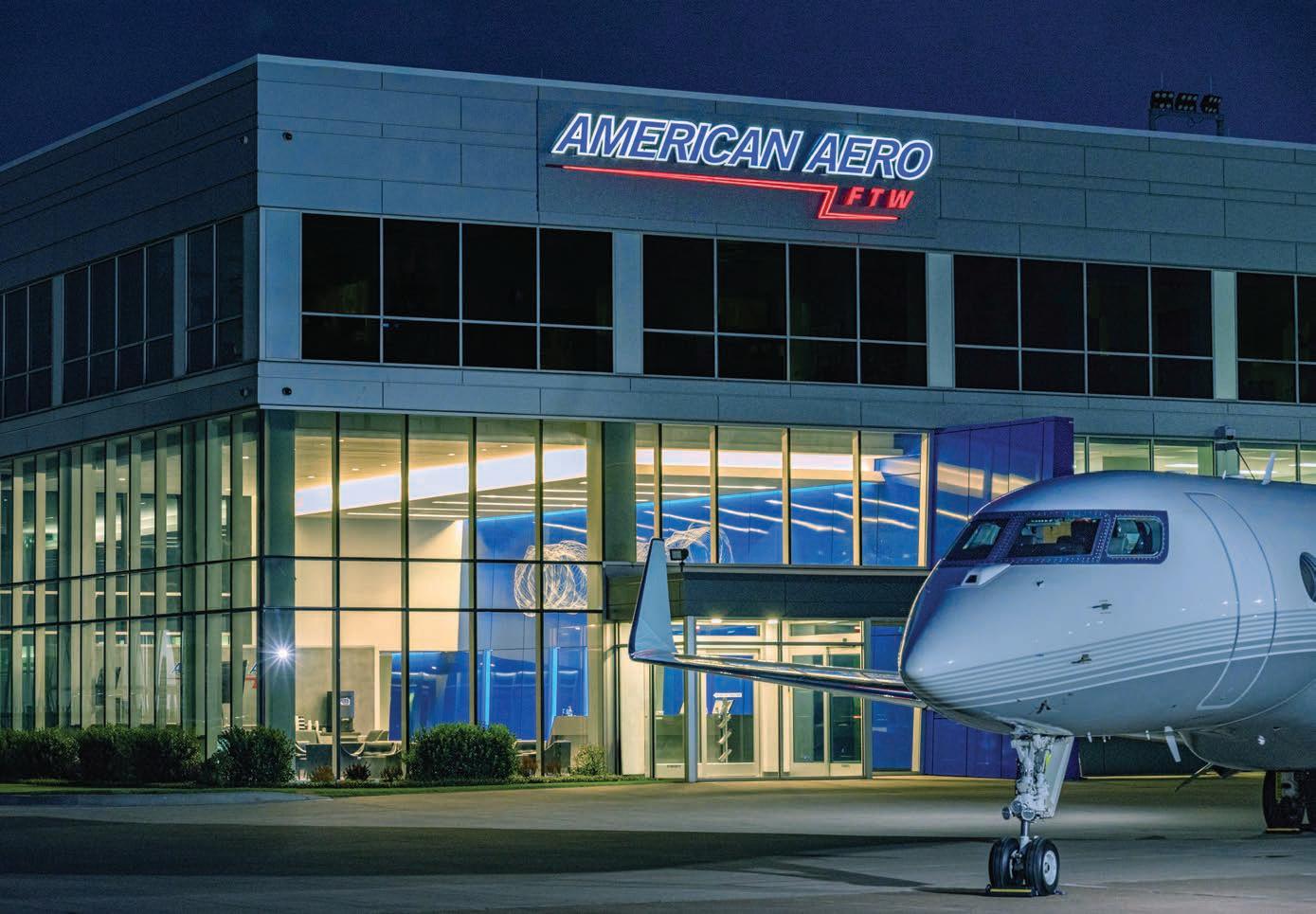

Bombardier opened its recent Safety Standdown in Wichita with conference veteran Tony Kern, founding partner and CEO of Convergent Performance, challenging the roughly 450 in-person attendees to think of their organization as a working ranch. Wearing a black Stetson, work boots, and a western overcoat, Kern equated an organization’s standards officer and safety officer as the herding and guard dogs of the “ranch” and that both should be distinct positions within an organization to ensure a culture of safety that permeates to the individual level.

“Standards and safety should not be viewed as part-time additional duties,” he said. “They are critical, core requirements for moving safety forward.” He recommended that organizations “keep pushing the bar” on developing safety as well as standards officers.
Kern also addressed the industry’s pilot and mechanic shortages, emphasizing that they could be alleviated in part by attracting more women to those careers. But first, he said, the industry needs to acknowledge that sexual discrimination is still an issue. And “we can’t make progress if we don’t acknowledge it exists,” Kern emphasized. He urged participants to make business aviation the place for women professionals.
Differences in compensation, cultures, and unintentional workplace messaging are some of the factors that can create a divide in an organization or department, leading to dissatisfaction and a breakdown in safety, explained Aviation Personnel International president and CEO Sheryl Barden and v-p Jennifer Pickerel, in a separate presentation.
For example, compensation trends in business aviation over the past seven years show that captains have seen a more than 30 percent increase, while schedulers have
seen only a 14 percent pay bump over the same period. Pressures that women and other underrepresented groups in an organization feel are also “likely greater than what others are feeling,” Pickerel said.
To overcome these barriers, they encouraged leaders to engage with employees by understanding what they value, identifying cultural mismatches, and learning their aspirations and what motivates them.
Attendees also heard about cybersecurity and safety from Jeffrey Troy, president and CEO of the Aviation Information Sharing and Analysis Center. Troy explained that while the industry is undertaking efforts to address growing cybersecurity risks, there needs to be better collaboration and coordination between the industry and policymakers. “There are way too many cyber rules that are not harmonized,” he said.
Other presentations included remarks from FAA acting deputy executive director Derek Morgan, NTSB member Michael Graham, and NBAA president and CEO Ed Bolen. Bombardier officials said 51 percent of this year’s in-person attendees were there for the first time. z
The NTSB is asking the FAA to issue an SFAR governing Part 135 air tour operators flying in Ketchikan, Alaska following seven fatal crashes in the area since 2007 that killed 31 and seriously injured 13. A unique set of topographical and climate conditions exist in the area that can cause weather conditions to quickly deteriorate, leading to VFR flight into inadvertent instrument conditions followed by controlled flight into terrain.
The NTSB said a voluntary 2009 agreement outlining air tour routes, reporting points, and best practices, “had proven ine ective at mitigating ‘overlapping hazards.’”
A new report from Market Research Future predicts the sustainable aviation fuel (SAF) market will be worth $60 billion by 2030. According to the report, liquid biofuels are currently the most advanced substitute for conventional petroleum-based fuels, considering the aviation industry’s focus on reducing its carbon emissions. Through 2030, the authors see the North American market as “one of the strong sales centers” for SAF. The study noted one of the key limiting factors is “the poor or negligible availability of raw materials.”
Although U.S. pilot certificate issuances are notably up, analyst Je eries estimated that the industry is undersupplied by 6 percent, or by 8,000 pilots, this year. Je eries further believes this will increase to a 12 percent shortage, or 18,000 pilots, by 2025 and to 15 percent, or 23,000 pilots, by 2030. Je eries forecasts that the pilot supply gap will widen as pent-up pilot certifications the industry is experiencing will normalize and retirements will average at 3 percent to 4 percent annually.

All segments of general aviation manufacturing were up year-over-year in the third quarter while total airplane billings rose 4.8 percent, to $14.1 billion, according to the latest report from the General Aviation Manufacturers Association.

Business jet deliveries rose by 1.8 percent for a total of 446, an increase of eight units over the same period last year. Cirrus delivered seven additional SF50 Vision Jets from its third quarter 2021 total, while Textron Aviation improved its tally of Citation Latitudes by six as part of its 4.3 percent increase in business jet output. Deliveries of Gulfstream’s super-midsize G280 improved from 12 to 16 year-over-year as the Georgia-based airframer increased its overall delivery totals from 80 to 82 aircraft. Pilatus remained static, handing over 27 PC-24 light jets in the first threequarters of both years.
On the downside, Bombardier’s delivery totals were off by nearly 10 percent as the Canadian OEM delivered its final Learjets earlier this year. While its Challenger
deliveries were up by four units compared with the first three quarters of 2021, it handed over seven fewer models from its Global factory. Embraer’s 2022 tally was off by two units, led by its delivery of eight fewer Phenom 300Es, while Honda Aircraft’s shipments of the light HondaJet was down by 13 percent. Dassault only reports delivery totals of Falcon jets in the second and fourth quarters.
Among the bizliner class aircraft, Airbus remained static with five deliveries, while Boeing, which had deliveries of two Boeing Business Jets (BBJ) during the first three quarters of 2021, had none this year.
In the turboprop segment, though total deliveries rose by 7.3 percent, the high-end pressurized subset only saw an increase of one aircraft year-over-year.
Pilatus, which handed over 56 of its single-engine PC-12s in the first three quarters of last year, delivered nine fewer copies this year, while Daher and Piper both delivered one fewer airplane between 2022 and 2021.
The Aircraft Electronics Association’s 2022 Rate and Labor Survey underscored the buoyancy of the market, with more than 60 percent of U.S. avionics repair stations expecting growth and success in the coming year. At the same time, the survey highlighted the increased cost of business, with more than half, and as many as two-thirds in certain regions, increasing shop rates and the overwhelming majority upping compensation. Only 7 percent of respondents expected business to decline, while 33 percent expect business to remain the same.
Wheels Up has entered a cooperative pilot hiring partnership with MAG Aerospace, a U.S. military contractor that logs about 100,000 flight hours annually in intelligence, surveillance, and reconnaissance operations. Under the pathway development program, current and former MAG military pilots transitioning to civilian life can move their employment to Wheels Up. Also, former MAG pilots who work for Wheels Up can take a leave of absence and work with MAG under the program. Such an arrangement provides both organizations a shared pipeline of pilots and allows the pilots
Flight booking platform Surf Air Mobility will be going public on its own following the termination of a $1.42 billion merger with special purpose acquisition company (SPAC) Tuscan Holdings Corp. II. The “mutually agreed” termination was approved by both companies’ board of directors, according to a Securities and Exchange Commission (SEC) filing. In a separate SEC filing, Surf Air Mobility announced plans to pursue a direct listing of its common stock.
Bombardier held a ground-breaking ceremony on December 6 for a service center at Abu Dhabi International Airport, marking its expansion into the United Arab Emirates. To open in 2025, the nearly 100,000-sq-ft facility will serve as a hub for Bombardier service activities in the Middle East. With capabilities to service the breadth of Bombardier’s Learjet, Challenger, and Global families, its hangar will have the capacity to fit up to four Global 7500s simultaneously. In addition to the large hangar, the complex will include a parts depot and provide scheduled and unscheduled heavy maintenance, aircraft modifications, paint, and AOG capabilities.
Private aircraft management and charter group Volare has agreed to add up to 20 of the Lilium Jet eVTOLs to its UK-based fleet. In an agreement announced on December 5, the UK company’s eVolare division placed a firm order for 10 of the Lilium Pioneer Edition version of the all-electric aircraft, with options to take another 10. From its headquarters at Oxford Airport, Volare intends to operate the Lilium Jet for charter flights throughout the greater London area. With a range of 155 miles, it will be able to reach destinations such as London Battersea Heliport and also Heathrow, London City, Gatwick, Luton, and Stansted airports.
North Carolina-based fractional aircraft provider Jet It has added two Embraer Phenom 300s to its fleet and plans for more, according to co-founder and CEO Glenn Gonzales. Jet It was founded in 2018 as an exclusive operator of HondaJet Elites. The Phenom 300 is an aircraft that Jet It can continue to build on its business, Gonzales said, noting that the light jets have more range and payload versus the HondaJet.

Its reputation may be tarnished in the financial and investment worlds, but cryptocurrency— with its quick transferability, blockchain traceability, and low transfer fees—is finding a warm welcome in the charter community among a vanguard of providers and customers.
These advocates note that while the charter industry is built on the promise of being ready when you are, the pledge is conditional: airplanes don’t move until operators get paid. That, they say, can make cryptocurrency transactions the best solution for quick, low-fee bookings. Moreover, notwithstanding last year’s collapse in their values, an increase in customer

demand and in providers offering digital currency payment options continues.
“A growing number of individuals are holding cryptocurrencies and are willing to spend them, and they are ignored by many [charter] companies,” said Simona Moosar, business development manager at Ecommpay, a European e-payment processor that handles such payments for some two dozen charter firms.
The demand is reportedly driven by a younger, crypto-savvy clientele, and
facilitated by payment processors like Ecommpay and many others that support the transactions. A CNBC survey of millennial millionaires released in June reported that 83 percent stored a portion of their wealth in cryptocurrencies, in contrast to the 4 percent of baby boomers and 25 percent of generation Xers.
But how many customers and how much charter is paid with digital coinage is unknown; payment processors don’t make the information public, and charter providers cite only rough uptake percentages, often without defining whether the figures represent customers o r revenues.
Our clients asked for this alternative, and we delivered...
But with recent data indicating between 23 million and 27 million Americans own Bitcoin, the first and still dominant cryptocurrency, the pool of potential spenders is large.
Crypto transactions came to air charter in 2014, five years after the digital currency’s introduction, when UK-based retail booking platform PrivateFly, now part of Directional Aviation’s OneSky portfolio, enabled charter payments in Bitcoin.
In the U.S., Florida-based Monarch Air Group introduced a crypto payment option in 2017.
“Traditional transactions still account for the vast majority of our flights, and will continue to do so in upcoming years,” said Monarch executive director David Gitman. “But our clients asked for this alternative, and we delivered. The digital nature of cryptocurrencies plays well with today’s digital charter booking systems.”
Supporters of crypto acknowledge that its wider acceptance faces challenges, starting with its association with money laundering, financing illicit activities, largescale scams, sustainability concerns, and most recently the cratering of cryptocurrency values and institutions—FTX the latest among them.
Countered Mauro De Rosa, CEO of Italy’s Fast Private Jet, which claims digital currency accounts for 30 percent of its transactions, “We are aware of the skepticism toward buying crypto. But paying with crypto is another story.”
As if to underscore that message, after European Central Bank president Christine Lagarde in May pronounced cryptocurrencies “worth nothing,” Dubai-based Jet Luxe cited her comment in announcing “newly enhanced digitized payment options” for access to its Bombardier Global 6000, via more than a dozen cryptocurrencies.
At LunaJets, another European charter operator that accepts crypto, CEO Eymeric Segard noted even after the recent devaluation, some customers “could still be making a profit when spending [cryptocurrency].” Meanwhile, he said, “We have seen no effect on crypto-paid charter following the recent loss of value of cryptocurrency.”
Concurrently, more U.S. providers are enabling cryptocurrency transactions. North Carolina-based charter, jet card, and fractional fleet operator FlyExclusive began accepting crypto payments last year for both charter and jet card purchases, “as another way to deliver value, convenience, and premium service for our clients,” president Mike Guina said.
Florida’s Stratos Jet Charters adopted the payment option this year, for security reasons. “We felt accepting crypto would dramatically reduce our risk versus
Exceptional service is responsive, consistent, and personal. Anticipate needs. Pay attention to details. Go above and beyond. That’s our promise.
Discover the Difference Best FBO in Texas. Top 3 Worldwide. 2022 AIN Survey

credit cards,” CEO Joel Thomas said, alluding to the blockchain technology that provides traceability for cryptocurrency transactions.
Given the apparent demand coupled with the relatively low adoption rate among providers, Moosar pointed out another benefit for charter firms accepting cryptocurrency payments: “You can actually attract a completely new clientele.”
Fee-wise, cryptocurrency payments typically cost about one percent of the amount transferred, versus credit card fees that can range from about 3 percent to 6 percent. Bank wire transfer fees vary, but crypto transfers cost far less than a SWIFT or SEPA equivalent, processors say. Bank transfers can also take several
hours, or one or more business days when sent internationally.
As for transacting with a currency subject to dramatic volatility, one simply transfers the requisite amount of crypto from their digital wallet to purchase the amount of fiat currency the charter contract is quoted in— typically U.S. dollars or Euros. Transactions typically take 20 to 30 minutes. As the charter provider is paid in the specified currency, they face no risk in fluctuating digital coin values.
“The private aviation company does not touch crypto at all,” said Moosar. “Payment

processors usually [display data in] the Excel dashboard environment. The transaction looks just like a transaction made in euros or dollars.”
Said Segard at LunaJets, “We get an immediate message confirming the funds are in our account, and they are transferred to Central Bank-backed currency straight away.”
But some providers remain wary of potential risks. Last year California’s Amalfi Jets enabled Bitcoin payments for known clients, but charges them an additional 20 percent transaction fee to “cover the volatility of the market price” of the currency, the company said.
Also, with the growing regulatory emphasis on know your customer, know your business, and anti-money laundering (commonly shorthanded as KYC, KYB, and AML) rules, concerns among payment agents persist about the adequacy of identifying the individual or organization making the payment, and the propriety of the funds.
But reputable crypto payment processors “comply with the same regulations that any company providing Visa or MasterCard does,” Moosar and others say, though they also stress the importance of first performing due diligence on whatever processing company a provider works with to ensure it complies with these reporting requirements.
Nonetheless, “Traditional payment institutions feel the [charter] industry is risky as it is,” said Per Marthinsson, chief revenue o ffi cer at Avinode, and inserting cryptocurrency into the equation only creates more aversion to expanding payment options in the space. “Cryptocurrencies need to evolve further for that risk appetite to be at an acceptable level,” he said.
Avinode, a business-to-business charter booking platform, does not support cryptocurrency transactions through its PayNode
A growing number of individuals are holding cryptocurrencies and are willing to spend them, and they are ignored by many [charter] companies.
processing service. But, Marthinsson noted, “Between brokers and operators for a wholesale transaction, there’s very little need for Bitcoin.”













Questions of value and regulatory oversight aside, the environmental cost of cryptocurrency, pegged in the public’s mind to the energy-intensive Bitcoin mining process, has also created blowback. But advocates point to the highly energy-saving Merge overhaul of Ethereum (the second most held cryptocurrency), completed in September, as proving the technology isn’t inherently unsustainable.















The “stickiness” of crypto transaction preference is also a question. Crypto pioneer Private Fly claimed they represented 20 percent of bookings at one point, but “payments made in this way currently account for less than 10 percent of transactions,” said European managing director Marine Eugène.
But if trends continue, charter customers may not only have more flights to spend cryptocurrency on but destinations to spend them in. This year Very Fast Jet published a list of the world’s most cryptocurrency-friendly cities, based on the number and variety of venues accepting the payment. Worldwide, Slovenia’s capital, Ljubljana, was number one, Prague the runner-up, and Buenos Aires took third place; New York ranked as the top U.S. destination for “crypto savvy” travelers.
Meanwhile, digital wallet apps that allow no-fee cash transfers, such as Zelle and Venmo, are growing more popular, and if transaction limits are raised, could also provide quick, no- or low-fee payment options. Additionally, Central Bank Digital Currencies—digital assets directly backed by governments and available to the public —now being discussed and adopted, could also serve the same purpose while perhaps inspiring more confidence.
In the interim, however, slow transfers and high fees for traditional payment methods are likely to spur more calls for crypto-friendly charter transactions. z













In 2020, when the owners of Executive Fliteways (EFI) began shopping the charter/management firm, James Prinzivalli grew apprehensive. “I loved this place,” the former dispatcher and charter sales director said of the operator where he’d started his career 25 years before. “The owners were getting a lot of interest from heavy operators, and negotiations started getting serious.”
The prospective buyer, a “very large” company with its own dispatch and operations departments, “had no real use for the employees working here,” Prinzivalli said. “That rattled me. It got me thinking about trying to buy the company myself.”
Notwithstanding Covid had cratered charter demand and that no other employees of the New York Islip- MacArthur Airport- based service, founded in 1980, were interested in taking a stake, “I decided to risk it,” he recounted. “I put my entire life savings on the line” and bought the company. The purchase closed in October 2020.
If he ever had any second thoughts, EFI’s new president and owner doesn’t let on. “I had put most of my career into this company and I believed in it,” Prinzivalli said recently, and two years on, his faith and investment have paid off.
“We’ve seen tremendous growth in the last year and a half,” he said, citing fleet restructuring and additions, along with new charter contracts and marketing initiatives. “Not only did we keep everyone’s job—no one missed a paycheck—we’ve added a lot of people,” including pilots, mechanics, operations, and accounting staff, he said.
Formerly catering to the midsize jet charter market, EFI has refocused on longer- range lift, and the fleet—now
doubled to about nine and counting— includes a Dassault Falcon 7X; a Gulfstream 550, two G500s, and a GV; along with an Embraer Praetor 600 and Phenom 300; and Bombardier Learjet 60s.
Soon after the purchase, Prinzivalli parlayed his company’s global charter experience into a contract with the U.S. Department of Justice for flights to points “around the world,” he said. “I don’t think I’m allowed to say anything further,” he added, but that set the tone for robust charter activity.
Today, EFI is generating 100-plus hours a month of charter on its large-cabin jets, he said, and the charter team “is really focused on getting the most revenue per hour for our owners.”

“My people are on the front line every day,” he said. “We strategize on pricing, where we think pricing needs to be, and
which opportunities are the best to take.”
About 75 percent of charter business is retail, the rest wholesale, and Prinzivalli noted the premiums major operators now pay quality providers for supplemental lift in high-demand periods has also bolstered the bottom line. A jet card, he added, “doesn’t fit into” EFI’s business model.
Upgraded cabin amenities have also been introduced. “We started standardizing all of our stock—liquor, wine, and the snack menus—on flights, to make it more consistent for passengers,” said Prinzivalli, a Long Island native.
The enhancement has boosted repeat business in both the retail and wholesale markets. “Every time someone charters with us, they know [Veuve Clicquot] Yellow Label Brut is going to be available on their flight,” he said.

The fractional aircraft ownership community has changed dramatically in the nearly 30 years since PlaneSense introduced its “intelligent solution” for shared ownership, built on a unique and compelling value proposition and the then-new Pilatus PC-12 single-engine turboprop platform.
“Nobody knew these airplanes,” recalled PlaneSense, Inc. founder and CEO George Antoniadis, describing his decision to build the fractional program around the Swiss aircraft as “a leap of faith.” But Antoniadis—an air transport-rated pilot who holds an MBA from Harvard and an electrical engineering degree from Zurich’s Federal Institute of Technology— recognized the potential revolution that the big, modern, and comfortable turboprop represented for the fractional arena.
new shares through the end of the year to focus on meeting commitments to existing clients, while adding infrastructure for planned growth. That included expanding staff by 25 percent since the pandemic began and creating a maintenance center in Las Vegas to support West Coast operations. Now, with sales of shares in the PC-12 and PC-24 set to resume in the fourth quarter, Antoniadis took time during a rare non-travel day to talk about what he sees as the keys to the program’s success and what the company is doing to maintain its edge.
Today, the PC-12 and the PC-24 are among the most coveted business aircraft, either turboprop or jet, whether for on-demand access, or to purchase new or preowned. Yet Antoniadis believes the PlaneSense value proposition is as important to the program’s success as the aircraft its clients fly on. The proposition is built on three pillars: service, flexibility, and cost efficiency, and team members “have a passion to deliver” on all three, he said.
The world-class PlaneSense service is highly attentive and personalized. “Our goal is to excel in long-term relationships,” said Antoniadis, and the company keeps “a razor-sharp focus on clients’ needs.”
PlaneSense operates two maintenance facilities to ensure quality and consistency across the fleet.

Flexibility comes from the ability of the PC-12, and now the PC-24, “to get people closest to their destinations,” with performance that opens access to thousands of airports that most business jets cannot use.
The cost-efficiency pillar rests on having “the most economical aircraft in its class” in both the six-place Pilatus turboprop and the eight-place jet, combined with the fleet optimization enabled by PlaneSense’s unparalleled experience with the platforms, as the world’s largest civilian operator of both models.
Since PlaneSense launched in 1995, major fractional brands have ridden booms and survived near collapses and ownership programs large and small have come and gone. With its all-Pilatus fleet, meanwhile, Antoniadis’ company has followed its founding vision and values, consistently growing while forging unrivaled client loyalty and creating a legacy of stability, longevity, and trust.
Now, amid an unprecedented surge in demand, supplychain disruptions, and increasing attention to sustainability, the PlaneSense vision and values resonate more strongly than ever, amplified by the completion of a slate of major service initiatives. Among them: the addition of the PC-24 light jet to the company’s fractional fleet; installation of high-speed Wi-Fi aboard all its aircraft; and expansion to full Continental U.S. service coverage with the elimination of the last out-of-area fees.
Like many flight providers, PlaneSense has been challenged by the current environment. In early 2022, it deferred sales of
“I call it the double economy of scale,” Antoniadis said. “You’re buying only as much aircraft as you need, but the whole asset shows up—that’s the first economy. The second economy is our system: the assets are highly utilized, keeping the operating costs per hour extremely low and the overhead costs minimal.”
These pillars are what Antoniadis believes makes PlaneSense the intelligent solution for shared ownership. “You can walk away at the end of the flight and pat yourself on the back, knowing you chose the right program.”
The three pillars are also the foundation for the stability, longevity, and trust that characterize the company’s relationships—not only with clients, but with team members and key partners, as well.
“We are relationship-focused, not transaction-focused,” Antoniadis emphasized. He noted that PlaneSense does not offer a “most-favored-nation” contract clause that guarantees a client
the lowest available terms, simply because equal terms for all is a core company principle. “You don’t need to be looking behind your back to see who got a better deal,” he said. “We commit that the transaction we’re entering with you is fundamentally the same as the previous one, and the next one.”
Illustrating the trust and stability that it engenders, even with the large growth in their numbers over the past decade, almost one-quarter (24 percent) of the company’s clients have owned PlaneSense shares for 10 years or longer. Some original shareowners remain with the program, and today the children and even grandchildren of some of them own shares as well, Antoniadis noted with both astonishment and pride.
Of course, excelling at long-term relationships requires meeting clients’ evolving needs, such as desires “for more capacity and speed,” which led the company to become the launch customer for the PC-24 twinjet, Antoniadis recounted.
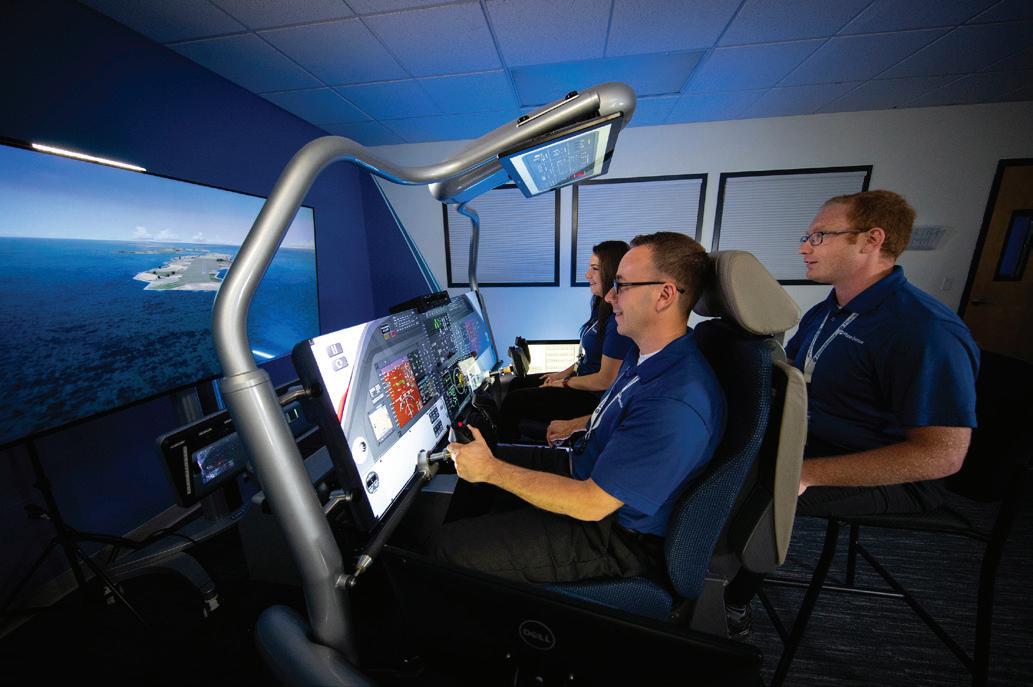
Introduced in 2014, the PC-24 light jet offers outsize performance and advanced features that prompted Pilatus to proclaim it the “Super Versatile Jet.” It’s worth recalling that when the order book opened at the European Business Aviation Convention and Exposition that year, the first two years of production—84 PC-24s—sold out before the show ended. PlaneSense ordered six and inaugurated service with Serial #101, the first ever PC-24, in 2018. By the end of 2022, the fleet will include 11 PC-24 jets.
aspirations, and we make sure that all of them are valued for who they are,” he said.
The same approach applies to key suppliers. “Instead of spending energy trying to eke out a better deal somewhere, we spend it on creating deep relationships,” Antoniadis said.
Though some business aircraft travelers consider fractional ownership out of reach, Antoniadis believes PlaneSense changes the calculus, making it the best option even for many who have jet cards, use charter, or own an aircraft outright—not only for current fractional customers seeking a smarter solution.

As for whole aircraft ownership, “It’s terribly cost-inefficient, unless you fly 300, 400 hours a year,” he noted. Meanwhile, chartering one’s aircraft out to generate offsetting revenue “creates a barrier to your own use,” he said. “The reason you own a whole airplane is so that you can fly whenever you want. Once others are using the plane, you’re removing that flexibility from yourself.”
For jet card customers, PlaneSense “might be a higher upfront investment, but if you calculate the entire cost, it’s much more economical,” Antoniadis said. Moreover, while a blizzard of blackout dates and restrictions can impact costs and access at many card programs, “We have far fewer restrictions than average,” he said.
An emphasis on relationships is also reflected internally. “I like that we have a family feeling,” Antoniadis said, noting that a significant number of the staff “have enjoyed working here for 20-plus years.”
Pilots, meanwhile, have a choice of more than 40 locations to base from, where they can live the lifestyle that suits them best.
“Our team members are people, with names, families, and
Another distinction between PlaneSense and jet card programs: “It’s a different kind of interaction and service,” Antoniadis said. “PlaneSense is an extension of your coming home.”
And for customers who currently charter and those new to business aviation, “Why compromise?” he asked rhetorically. “Come to the best service solution, which also turns out to be one of the most cost effective over time.”
George Antoniadis, President & CEO, founded PlaneSense in 1995 with a desire to provide better solutions for private flights.
With safety and quality at the forefront of its operations, PlaneSense developed a robust in-house training program for pilots and maintenance technicians.
Going forward, PlaneSense will remain true to its vision and values, Antoniadis said. “We believe in organic growth, and in constantly improving the value of the program for our clients, which results in more clients.” Toward that end, he continued, “The more things we can control that are core to our business, the better we can improve the program.”
That’s why, with safety at the heart of PlaneSense’s operations, the company trains all its pilots and maintenance technicians in-house, he said.
“We have more experience with these airplanes than anyone, so we believe we can train our pilots and technicians better than anyone.”
full-motion PC-12 NGX simulator for the facility is under construction.
Full maintenance operations have been part of the service strategy since the company’s inception in 1995. To ensure quality and safety, the majority of maintenance is performed by highly trained technicians at the expansive, state-of-the-art hangar at the company headquarters in Portsmouth, NH as well as a second facility in Boulder City, NV, added in 2021 to service the increasing flight volume in the Western U.S. and supplement the workload normally handled by Portsmouth.
In addition to robust in-house training, A&P maintenance technicians take part in training through the individual manufacturers, including Pilatus.
Meanwhile, to create the next step change in efficiency, the company is developing with thought leaders from MIT an optimization tool that amalgamates big data on aircraft, clients, crews, schedules, and other operational keystones, processed through AI analysis. Initial implementation of this project, which began in 2020, is expected by year’s end.
Technology is also helping PlaneSense to meet changing client expectations, though those expectations haven’t necessarily evolved in ways Antoniadis would have predicted.
“My stated goal when we started the company was that a human would always answer the phone, and it wouldn’t ever take more than four rings,” he said of his customer service policy. But today, he observed, “People prefer to press soft buttons on their cell phones and not talk to anyone. It does take away from the human touch that I have always thought is so important, but that’s the new status quo. So, we’re constantly developing enhancements on our app and portal so clients can do more that way.”
For nearly three decades, the constant exchange between Pilatus Aircraft and PlaneSense has resulted in an incredible knowledge base, which is the foundation for training, maintenance, and safety initiatives at PlaneSense.

The pilot training center at the company’s Portsmouth, New Hampshire headquarters is equipped with customized flight training devices commissioned from FlightSafety International (FSI), and a

Some of the aircraft new to the fleet have come from first-time buyers, some from longtime owners seeking “more personalized attention” than their former management company provided, said v-p Keith Ruggirello. “There are no layers of management here,” he said, and EFI aims to be “a lot more responsive” to owners than large management companies often can be.
Ruggirello, who is in charge of fleet acquisitions, jet sales, and market research, started his career alongside then 26-year-old Prinzivalli in dispatch at EFI, before moving on and accumulating significant operational experiences as a Part 135 charter and Part 121 airline pilot. Recruiting Ruggirello back to Executive Fliteways was one of Prinzivalli’s first strategic moves, and began while he was negotiating the company’s purchase.
An Argus Platinum-certified operator, EFI has also instituted a safety management system (SMS) under the new leadership.
More recently, EFI has brought a director of marketing on board, launched a social media campaign, and is rebranding and “modernizing” the company logo, corporate colors, and pilot uniforms.
“Social media is a great way to reach out to new customers and opens up a new gateway of clientele,” Prinzivalli said. An Instagram campaign features fleet aircraft, destinations, and crewmember spotlights.
“It’s really important to have a visual aesthetic on Instagram for a company like Executive Fliteways,” he said. “It’s like the new magazine—it helps us reach our younger demographics, who actually use social media to source companies.”
Ideally, the company wants a fleet of 15 to 20 aircraft, “just focused on the right airplanes,” said Ruggirello. That would include at least a couple of Florida-based midsize jets, which have seen an outsize growth in charter traffic post-Covid.
“A lot of our owners have second homes [in Florida], and many charter clients moved there the past couple of years,” said Prinzivalli. z

Vision Products recently debuted PilotVision—a headset-mounted augmented reality display to the commercial market. The device costs $27,000 and serves as a portable head-up or head-wearable display. The high-resolution (1,920 by 1,200 pixels) monocular system provides a 62-degree diagonal field of view with minimal obscuration, o ering overlays that show groundspeed, altitude, attitude, and terrain information.
Rather than relying on flight deck input, PilotVision’s current iteration is fed by a self-contained, battery-powered control unit with an integrated Samsung S8 smartphone and AHRS unit, augmenting and serving as a backup for panel instrumentation. Display data is provided by the iFly GPS EFB app, which includes IFR and VFR charts, georeferenced approach charts, synthetic vision, ADS-B receiver support, wind-optimized flight planning, fuel prices, and more.
According to Vision Products
business development director Ben Mall, the unit could easily be adapted to accommodate input from EFB apps that have HDMI output. Moreover, PilotVision could also take data directly from cockpit avionics, while eliminating the control and AHRS components and halving the cost of the unit, he said.
The launch customer for PilotVision is the U.S. Navy, which is evaluating a unit, said Mall.
Vision Products showed off PilotVision during the recent NBAA-BACE, marking its first appearance in a public forum, and attendee reaction was “very positive until we get to price, which we expected,” Mall said.
Campbell, California-based Vision Products is now “looking into” adapting the unit for the proprietary systems of other EFBs, in addition to investigating linking the portable system directly to panel avionics and the certification requirements that would entail. J.W.
have offices in Fort Lauderdale and Houston,” Zuriqi noted.
Despite gathering pessimism over the global economic outlook, UAE-based Hadid International Services believes Middle East economies are well placed to power forward post-Covid. “The economy in the region is booming,” commercial director Issa Zuriqi told AIN . “I am doubtful there will be a recession in the UAE, and if there is it will bounce back as strongly as it always has in the past.”
Regional investments in the food industry, technology, and real estate were gathering pace. “The Gulfood Expo [in February] saw 120,000 visitors—that’s major,” he said. “The food industry, not just in Dubai and Abu Dhabi, but in other emirates, is booming. These are the three sectors I see doing well besides aviation.”
Zuriqi doesn’t view the specter of rising inflation and interest rates as dangerous. “There are some strong economic tailwinds, at least in the short to mid-term, with additional business expected from the Qatar World Cup and new visa reforms being introduced. Even U.S. rate hikes can be viewed in a positive light as they benefit lenders in the region. We are optimistic in general because we see lots of business— and more than before Covid.”
Hadid measures progress by aircraft movements and the number of trip requests compared to before Covid or to previous months. “I’m not talking about just in Dubai, but globally they have increased,” he said. “Businessmen are getting back to normal again or doing even better. If we are talking about general aviation or commercial, it’s crazy. Airlines are reactivating their routes.”
The company employs around 200 people and has a global footprint. “We have operations offices here in Dubai and in Pakistan, India, and Turkey. In the U.S., we
It also has offices in Malaysia and England; a presence in Algeria, Mali, Chad, and Niger; FBOs in Riviera, Italy, and Karachi, Pakistan; and supervisors in Djibouti, Ethiopia, Saudi Arabia, and—for the World Cup Finals— Qatar. Due to the Ukraine conflict, its Moscow office is closed for the time being.
power. As [King Salman’s heir], his actions are welcomed by all Saudis. He’s bringing in more business. The country is open to visitors of all types. Even women can fly in, whereas before it was difficult. Today, the openness at restaurants in Riyadh or Jeddah makes you think you are in Dubai.”
In Dubai, Zuriqi explained that general aviation movements are split 70/30 between Al Maktoum International (OMDW) and Dubai International (OMDB). Hadid uses three main FBOs in Dubai: ExecuJet, Jet Aviation, and DC Aviation-Al Futtaim.
ISSA ZURIQI COMMERCIAL DIRECTOR“We have been in the market for the last 40 years, as the parent or grandparent of flight support companies in the region—I don’t want to say in the world; we have Universal, and other big companies in the U.S. and in Europe—and we are responsible to operators for what we do,” Zuriqi said. “We promise that we will maintain our stability and creditworthiness with our clients and suppliers.”
According to Zuriqi, there is no business aviation lull taking place in Saudi Arabia. “I don’t see it as slow,” he said. “In my view, business there is going really well.
“In general, the Saudis are marketing the country internationally and they want people to come in. They want to compete with Dubai in a positive way. They claim that what Dubai has done over the last 10 years, they will be able to do over the next two.”
He said Crown Prince Mohammed bin Salman’s reforms as prime minister had played well at home. “Politically, he has
“OMDB is busy with commercial, and there is no place for business aircraft. The ExecuJet MRO hangar is packed. Businessmen still want to come to OMDB and will remain here. The Jet Aviation and ExecuJet FBOs at OMDB are still running. Giving up on OMDB is not easy. It is the heart of Dubai. I would love to see it become a business aviation-only airport one day,” he said.
Meanwhile, he believes that progress is being made, albeit slowly, on business aircraft operations in Africa. “Some civil aviation authorities [CAAs] do not really cooperate on general aviation,” Zuriqi said. “If you are operating a private jet, they treat you as a commercial operation. I’m not a commercial operation; I’m a private jet. I want to decide to come tomorrow. There need to be better mechanisms in place to do so.”
Hadid wants to be part of these changes in Africa and has been advising CAAs in the region. “We tell them about the differences between commercial and general aviation. We have been in Africa for a long time, and we speak to CAAs constantly—sometimes uno ffi cially,” he explained. “We sit down with them and lend assistance, especially on the operations side, with things like permits and navigation fees. We offer our expertise, and it has brought results in many countries.”

The Middle East Business Aviation Association (MEBAA) has voiced deep concern over the unprecedented campaign being waged by the environmental lobby on the industry’s viability.
“Business aviation is under attack,” Ali Alnaqbi, MEBAA’s founding and executive chairman, told AIN. Alnaqbi—who is also chair of the governing board of the International Business Aviation Council—cited a growing chorus of disapproval regarding the inequalities inherent in the industry, including a declaration this summer by the French transport minister that restrictions should be placed on business aviation.
“There are many who are unhappy about business aviation,” Alnaqbi said. “We need as an association and as an industry to work closely together. We do not exist just to do business and make money, leaving communities or countries without any support. We need to start thinking in humanitarian or charitable terms. We need to think about other elements that will help us pay something back to the countries where we are operating.”
Alnaqbi’s comments are compelling given the Middle East’s reliance on oil exports. However, the region is also alive to the need for renewables, as major plans for multiple green-hydrogen and solar energy projects make clear.
MEBAA constituents are a vital cog in the global industry because of the number of high-net-worth individuals, VVIPs, and royal families who fly privately. Boeing previously told AIN that more than a third of BBJ products went to customers in the Middle East, especially in the Gulf Cooperation Council.
Alnaqbi said that while the entire aviation industry contributed 2 percent to global CO2 emissions, business aviation’s share was less than a quarter of that, at 0.44 percent. Fully 85 percent of private aviation use was devoted to business, while only 15 percent was family, leisure, and holiday travel, he claimed.

Fuel suppliers in the region told AIN there is no sustainable aviation fuel (SAF) currently available at Middle East airports. Government mandates will likely be required to initiate SAF production and catalyze action at national oil companies.
Regional fuel companies said the lead needs to come from commercial airlines, rather than business jet operators. The fuel requirement for business jet operations for one year is the same as a major international carrier would consume in a week, according to fuel suppliers. They added that airlines need to be involved to get the volumes up, and the costs down, before business aviation can take up the challenge.
Alnaqbi said the SAF agenda was a high priority at MEBAA 2022. “We [encouraged] the UAE GCAA and counterparts all over the region to initiate discussions with local fuel producers.”
OEMs have a variety of new business aircraft models—from helicopters to long-range jets—under development and coming to market soon. They are bringing to market a range of technological advancements that hold the promise of greater range, efficiency, safety, and passenger comfort.
BELL 525

Announced in 2012 and currently nearing certification, the 525 is the most ambitious project to emerge from Bell since it started making V-22 “Osprey” tiltrotors with Boeing for the U.S. military. With the
525, Bell wasn’t just going after medium twin helicopters like the wildly popular AgustaWestland AW139 or the large Sikorsky S-92 favored by heads of state for VVIP conveyance; it created a new category between the two and is going after both markets. Bell designed the 525 to be cost-competitive for any mission between 50 and 500 nm that either of these other helicopters currently performs. This is the largest civil helicopter that Bell has ever built. It has an all-composite, fiveblade main rotor system with a diameter of 54.5 feet.
The 525 is comparatively fast with a top speed of 155 knots. It’s aerodynamically slick and features fly-by-wire flight controls and touchscreen-controlled Garmin
G5000H avionics. Gone are the traditional cyclic sticks between the pilots’ legs. The cockpit has sidestick controls and a decidedly futuristic feel. The pilots’ seats swivel into position for ease of egress. Ahead of them is a low-slung digital instrument panel and an enormous field of Plexiglas that affords superb visibility over the nose and down to the ground.
Entry to the 525’s 4.5-foot-tall cabin is through a pair of hinged doors located between the cockpit and the first of four seating areas or through two large aft sliding doors. Passengers enjoy 88 sq ft of floor space and a 128-cu-ft baggage hold—bigger than what you’ll find on most corporate jets. VIP cabin layouts are expected to seat eight to 12 passengers and to incorporate
all the entertainment, information, and high-speed connectivity equipment found on the latest private jets.
Hill unveiled the five-seat HX50 turbinesingle helicopter in August 2020 with the promise of bringing “disruption that redefines the modern helicopter.”
It plans to initially offer it as an amateur-built aircraft in 2023, with a certified Part 27 version—the HC50—following in 2026. List price for the kit aircraft is $662,000. The design features an all-composite, three-blade main rotor, retractable landing gear, and ducted tail rotor. Performance targets include a 140-knot cruise speed and a maximum range of 700 nm.
Available interior features include in-seat electric heaters and air-conditioned seat ventilation, a refrigerated center console compartment beneath the armrest cushion to chill drinks and snacks, and a power supply for each passenger’s tablet computer with audio streamed directly to passenger headsets. Each passenger seat can be equipped to support rear-facing, forward-facing, and child booster seats.
In the flight deck, the avionics system can include synthetic vision, a traffic awareness system, weather data integration, an additional radio, a navigation radio and HSI, a radar altimeter, and ATC record and replay. All HX50 aircraft will be fitted with a standard two-axis attitude-based stability augmentation system and autopilot and can be upgraded to a four-axis autopilot. The HX50 can also be equipped with a pilot-operable folding blade system that replaces standard lag damper pins with interlocked quick-release pins, allowing the blades to pivot around the blade roots and orient over the tail boom. Safety interlocks prevent the aircraft from being operated with the blades unlocked.
A Helimove smart ground handling system uses electric drive units in the aircraft wheels to maneuver the aircraft on the ground after engine shutdown, from either
within the helicopter or via a smartphone/ tablet app. Similarly, a Home Base secure wireless link enables powered hangar doors to be opened or closed from within the aircraft. The aircraft can be ordered with skids as opposed to wheels, and an emergency float system is fully integrated into flush-fitting pockets along the fuselage and inflates within three seconds of activation.
cases, it will be faster to make these trips with the AW609 than with a helicopter or private jet. The aircraft will be powered by a pair of Pratt & Whitney Canada PT6C67A turboshafts and include Collins Pro Line Fusion avionics.
Cabin size is on par with light jets and turboprops—height is 60 inches, width is 58 inches, and length is 13 feet, 5 inches.
Leonardo’s first production AW609 civil tiltrotor made its initial flight on October 13 at the company’s Philadelphia facility. Designated AC5, the aircraft was one of three customer aircraft on the production line and will join the other three prototype AW609s in the “last stages” of flight test. Leonardo Philadelphia has been gearing up for the AW609’s entry into service, building a new training academy that includes an AW609 full-flight simulator and pilot and maintenance training coursework.
The AW609 takes off and lands like a helicopter yet can achieve forward speeds of around 270 knots, on par with a fast turboprop airplane. It will likely transform personal and business travel between cities that are 700 to 1,100 nm apart. In many
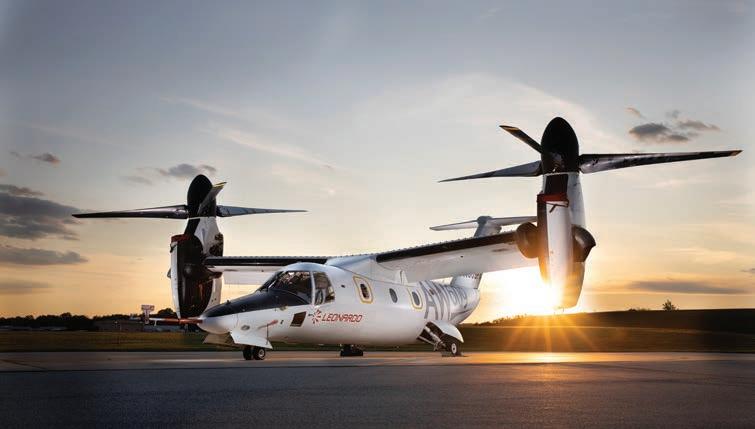
Leonardo gave the main cabin door a clamshell design and widened it to 35 inches, making the 609 more suitable for a medevac role. The VIP cabin features a small refreshment center followed by a club-four grouping and an aft belted lavatory while a less-plush corporate configuration incorporates six to seven seats. Buyers will be able to customize fabrics and colors, much as they would for a corporate jet.
Textron Aviation announced this new single- engine turboprop program in 2016 and the aircraft made its first flight in November 2021. The model is aimed squarely at the market for the Pilatus PC-12, which, until now, has not faced a viable competitor, and Textron’s goal is for the Denali to offer comparable
performance with lower operating and maintenance costs.
The Denali’s flat-floor, pressurized cabin is 16 feet, 9 inches long—the same as the cabin in Cessna’s durably selling but unpressurized and slower Grand Caravan EX turboprop utility single; the other cabin dimensions are nearly identical, too: 58 inches high and 63 inches wide for the Denali and 54 inches high and 64 inches wide for the Grand Caravan. The Denali’s cabin is an inch taller, nine inches wider, and an inch longer than that of the King Air 250 twin, which sells for $1.3 million more. It is the same height as the PC-12’s cabin but three inches wider and two inches shorter.
Textron expects the Denali to have a range of 1,600 nm with four passengers, a maximum cruise speed of 285 knots, and a full-fuel payload of 1,100 pounds. The aircraft features a 53- by 59-inch rear cargo door (slightly larger than the one on the PC-12) and a digital pressurization system that maintains a 6,130-foot cabin to 31,000 feet. Options include an externally serviceable belted lavatory with a pocket door enclosure in the aft of the cabin. The stylish cockpit will be equipped with the Garmin G3000 touchscreen-controlled avionics suite and will offer high-resolution multifunction displays and splitscreen capability. The G3000 flight deck will include synthetic vision, weather radar, advanced terrain awareness warning system and ADS-B capabilities.

The Denali is powered by a 1,240-shp GE Catalyst turboprop engine that features full authority digital engine controls and single-lever power and propeller control. GE estimates that the engine could be 15 to 20 percent more efficient than comparable models. And its manufacture employs 3D printing, which not only cuts its weight and improves reliability, it also substantially reduces production costs. The initial time-between-overhaul interval will be 4,000 hours.
Daher plans to deliver its first $3.5 million Kodiak 900 single-engine turboprop in January. Compared to the in-production Kodiak 100 Series III, the unpressurized 900 features a 3.9-foot fuselage stretch, wheel pants, a variety of aerodynamic clean-ups, single-point refueling, and a Pratt & Whitney Canada PT6140A engine, which delivers 900 shp, 150 more than the Series III. Maximum cruise speed is 210 knots, range is 1,129 nm, and useful load increases by 100 pounds to 3,630.
The stretched cabin increases cabin volume by 20 percent to 309 cubic feet, enough space for an eight-seat, doubleclub executive configuration. Each seat position has access to cupholders, USB ports, headset jacks, and personal storage.
The 2600 may be Honda Aircraft’s next step forward. Announced in 2021 as a “concept,” it promises to bring new economics
to transcontinental business travel. Like the in-production HA-420, it will be certified for single-pilot operations and have good short-runway performance: the estimated takeoff distance at maximum weight is just 3,300 feet. Honda claims it will be 20 percent more fuel-efficient than comparable light jets and 40 percent more than midsize ones with similar cabins.
Similar in appearance to the HA-420, the 2600 features Honda’s patented and distinctive over-the-wing-engine-mount design, which delivers midsize cabin comfort for seating up to 11 and light jet operating economics with a twist: transcontinental range. The aircraft will have a maximum cruise speed of 450 knots and a maximum altitude of 47,000 feet, where cabin altitude is a comfortable 6,363 feet. The maximum takeoff weight will be nearly 17,500 pounds.
The wider fuselage produces a cabin cross-section that is 62.5 inches tall and 61 inches wide, 4.5 inches higher, and one inch wider than on the HA-420. The modular cabin is 25.4 feet long and features a galley and enclosed aft lavatory with seating layouts of either a double club four, for
eight passengers, or a single club four plus a half club and a three-place divan, for nine. Honda also has designed a special mattress that mounts atop two facing single seats. The distance between seatbacks on the facing single executive seats is seven feet. Combined interior and exterior baggage stowage is a generous 120 cu ft.
While engines for the new aircraft have not formally been discussed, it is widely believed that it would be powered by a larger version of the GE/Honda HF120 on the HA-420. GE Aviation executives said some years ago that this engine was upwardly “scalable.”
Introduced in October 2021, the $34.5 million G400 is a shortened version of the airframer’s new-generation G500, a flyby-wire symphony of computerized flight controls, modern avionics, and new fuel-efficient engines that Gulfstream first delivered in 2018. The G400 bundles all these G500 attributes into a package with a maximum takeoff weight that is nearly 10,000 pounds less and a cabin that is five feet shorter. (The aircraft overall is about 10 feet shorter at just over 86 feet.) The G400 also accommodates two to four fewer passengers, and its range is 1,100 nm less than that of the G500.

The G400 has the same generous, finished cabin cross-section as the G500: a little over six feet tall, about seven and a half feet wide, and 1,441 cubic feet of volume. The interior is available in three basic layouts with seating for nine to 12 with berthing seating for five. Other features include forward and aft lavs, ample galley space, all the comforts and in-flight entertainment and connectivity features offered by the G500, and the same 175-cu-ft baggage hold. There are 10 big oval cabin windows—a signature design feature on all Gulfstreams— in a cabin with 100 percent fresh air and a
cabin altitude of just 3,255 feet while the airplane cruises at 41,000 feet. (Maximum altitude is 51,000 feet.) The airplane will deliver respectable speed, 22 percent lower emissions, and compliance with Stage 5 noise standards from the pair of Pratt & Whitney PW812GA engines bolted onto the back.
Anticipated to enter service in 2025, the G400 can fly New York to Los Angeles or London to New York nonstop: 4,200 nm at Mach 0.85 or 3,950 nm at Mach 0.88, and its top speed is Mach 0.90 (as opposed to 0.925 Mach for the G500). Fully loaded at 69,580 pounds, it can take off from runways as short as 5,000 feet.
Dassault announced the approximately $57 million 6X in 2018. It made its first flight in 2021 and deliveries are expected in early 2023. The 14- to 16-passenger aircraft has the largest cross-section of any purpose-designed business jet flying today: eight and a half feet wide, six and a half feet high, and just over 40 feet long. Its capacious, bright, and airy cabin provides 1,843 cubic feet of volume. A skylight illuminates the entryway, and 30 windows flood the space with natural light. All that room allows for a good deal of flexibility, including the ability to
About 10 feet shorter than the G500, the G400 can fly 4,200 nm at Mach 0.85.
The $57 million Falcon 6X can take o with a balanced field length of 5,840 feet at mtow.

have conference-table seating for six and a comfortable aft stateroom. The wider cabin also makes it possible for the 6X to offer a bigger galley. The 155-cu-ft baggage compartment is accessible in flight, plus there are another 76 cu ft of unpressurized baggage space.
Like most Falcons, this one will blend good short- and long-range capabilities. It will be able to use runways as short as 3,000 feet (partially loaded) while delivering a range of 5,500 nm with a top speed of Mach 0.90. The 6X’s high-efficiency Pratt & Whitney PW812D engines deliver 13,500 pounds of thrust each and 10 percent better fuel economy than legacy engines in their thrust class. The 6X features full fly-by-wire flight controls. Its new wing is designed to mitigate turbulence and is equipped with flaperons, leading-edge slats, and trailing-edge flaps. At maximum takeoff weight, the Falcon needs a balanced field length of as little as 5,840 feet.
The new EASy IV cockpit, based on Honeywell’s Primus Epic avionics, features a simplified, one-button, power-up system and the FalconEye combined vision system head-up display for landing in low-visibility situations and better situational awareness. New and larger crew seats provide more legroom and comfort for pilots and can recline to 130 degrees.
Gulfstream’s new long-range, 107,600pound (maximum takeoff weight) flagship builds on the success of the G650 and G650ER, offering its widest, tallest, and longest cabin. The G700’s long legs and increased capabilities and comfort are derived from engines, curved winglets, avionics, flight controls, cabin, and seating that build on the modern systems and design philosophy employed by its
Featuring the fly-by-wire active sidesticks of the G500/G600, the G700 is next up for service entry.
smaller G500 and G600 stablemates. The aircraft was announced in 2019 and is expected to enter into service within the next few months.
Like the cabins in the G650 series, the G700’s provides a sanctuary of understated elegance. The new cabin is 10 feet longer, though, for a total length of nearly 57 feet—a mere three feet shorter than a regulation bowling lane—and is carved into up to five distinct living zones that can be configured to seat from 13 to 19. While the G700 offers many cabin layouts and seemingly endless finer details, what makes it a true lux long-hauler is the available “Grand Suite” in the aft fuselage. It’s the closest thing to a five-star hotel room in a production business jet. It can be equipped with a curved-edge, queen-size bed opposite a full-size dresser. The adjacent aft lav features two windows, a stand-up closet, a large vanity, and an optional stand-up shower. The lav also provides in-flight access to the pressurized, 195-cu-ft baggage hold, which can convey 2,500 pounds.
The G700’s Symmetry digital flight deck was first introduced on the G500 and G600. (The avionics of all three, based on Honeywell’s Primus Epic system, are so similar that pilots can qualify to fly them with a common type rating.) The control
yokes of the G650 line are gone, replaced by BAE active control sidesticks linked to a triple-redundant computerized fly-by-wire flight-control system. The avionics feature Gulfstream’s enhanced flight vision system (EFVS) and twin head-up displays along with the new Gulfstream Predictive Landing Performance System (PLPS).
Power comes from a pair of Rolls-Royce Pearl 700 engines that each deliver 18,250 pounds of thrust. The Pearls are improved derivatives of the BR725 engines on the G650 series and are cleaner and more efficient. They provide 8 percent more thrust while consuming 3.5 percent less fuel and meet or exceed international standards for noise and nitrous-oxide emissions.

The $71.5 million G800 borrows many of the elements designed for the G700 and adds 500 nm of range. Those include the cabin seats, cabinetry, and lighting, the Symmetry flight deck, wing, tail, and RollsRoyce engines. Wingspan grows to 103 feet. Power comes from a pair of RollsRoyce Pearl 700 engines, each rated at the same 18,250 pounds of thrust of the G700’s engines.
Maximum takeoff weight expands to 105,600 pounds while maximum range
increases to 8,000 nm at Mach 0.85 (7,000 nm at Mach 0.90). The G800 made its first flight in June and is expected to enter into service late next year.
This updated $78 million version of the OEM’s current Global 7500 flagship was announced in May 2022 and features increased speed and range via software updates, modification of the existing GE Passport engines that power the 7500, and optimization of space in existing fuel tanks. First deliveries are expected in 2025 and the aircraft will eventually replace the 7500.

The 8000’s maximum speed increases to Mach 0.94, positioning it to be the fastest certified of the business jet, and maximum range stretches by 300 nm to 8,000 nm. It already has broken the supersonic sound barrier as part of flight testing. The aircraft features the same full-length fuselage and four-zone cabin as the 7500 and its maximum 2,900-foot cabin altitude. Existing 7500 customers will be able to upgrade their aircraft to the 8000 via service bulletin.
In May 2021 Dassault launched a potential kill shot at large-cabin, long-haul competitors Gulfstream and Bombardier, unveiling the 115,000-pound (maximum takeoff weight), Mach 0.925 Falcon 10X. The company expects the $75 million, 7,500nm (at Mach 0.85) twinjet to enter service in 2025.

Compared with offerings from its bizjet peer group, the cabin of the 10X will be at least eight inches wider and five inches taller. It’s six feet, eight inches tall; nine feet, one inch wide; and 53 feet, 10 inches long, yielding 2,780 cubic feet of cabin space. That’s a full 177 cubic feet more than the Gulfstream G650/700 offers, but six cubic feet less than the Bombardier Global 7500 provides. While the latter has a longer cabin, however, it is considerably
narrower, at eight feet wide, and with six inches less headroom. The 10X’s larger tube also accommodates a more capacious forward lav and a galley big enough for scratch cooking. Natural light illuminates the cabin through 38 windows that are 50 percent larger than those on the 8X. Humidity levels can be set and a new air filtration system delivers what the airframer says is “100 percent pure air.” Cabin altitude at 41,000 feet is just 3,000 feet.
The 10X should deliver good short runway performance thanks to a new, all-carbon fiber, highly swept wing with integrated winglets and a clever flaperon and leading-edge slat design, as well as a pair of Rolls-Royce Pearl engines
bolted onto the back. The Pearls deliver more than 18,000 pounds of thrust each and incorporate a variety of new design features that make them cleaner and more e ffi cient. They are also wired to an advanced engine-health-monitoring system, as is the entire aircraft. The cockpit will have a digital touchscreen “next-generation” flight deck—based on the Honeywell Primus Epic system—features full fly-by-wire controls, automatic flight envelope and “recovery” protections, and the Smart Throttle single-lever power control incorporated in the fly-by-wire flight control system. It also offers dual FalconEye head-up displays, which combine enhanced and synthetic vision. z
Boom’s supersonic Overture will fly at maximum speed of Mach 1.7 and carry 65 to 80 passengers.
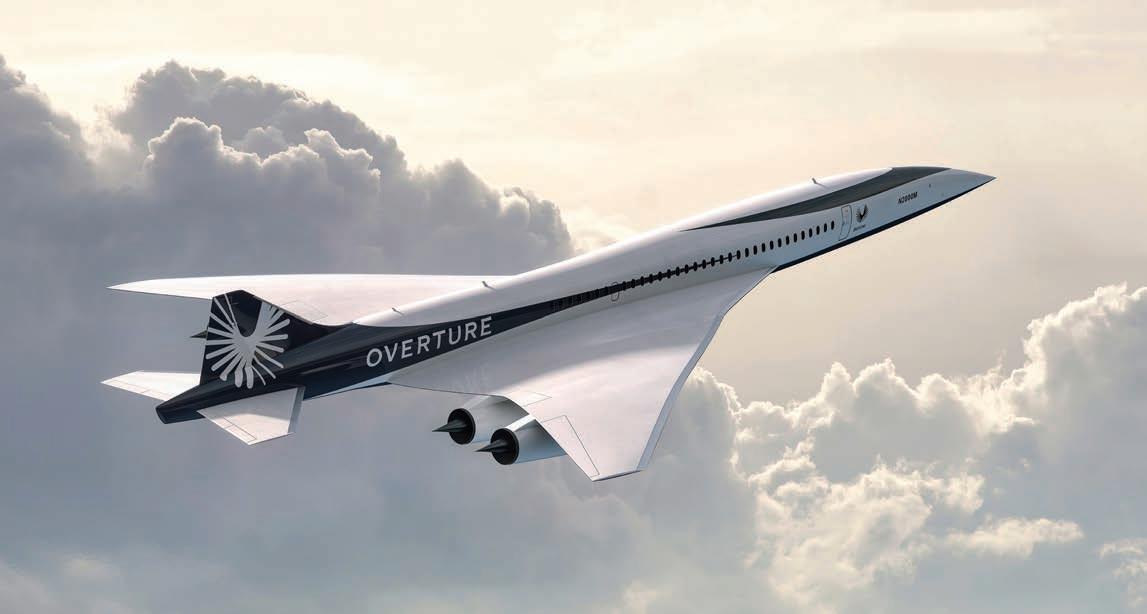
The Aerion Corp. decision in May 2021 to cease operations immediately raised questions on whether it was a “category killer,” the end of supersonic aspirations. After nearly two decades of design efforts, Aerion was believed to have the inside track to returning a civil supersonic aircraft to market. However, a lack of support from the investment community brought those efforts to a screeching halt, raising questions about the viability of supersonic.
However, the issues for Aerion were financial rather than a technological barrier as the company had accrued some fourdozen patents. Further, it was just one of
several efforts underway, and at least one, involving a partnership between Skunk Works giant Lockheed Martin and NASA, may play a key role in the future of supersonic flight.
Lockheed Martin—which is no stranger to supersonic flight—and NASA are in the midst of a multi-year Quesst research project designed to gather data on supersonic noise signatures that could be used in a potential reevaluation of a ban on supersonic flight over land. This research will involve a series of supersonic flights
of a specially designed “X” plane (the X-59) over various communities to assess noise impact.
The 100-foot-long X-59, however, isn’t the traditional supersonic aircraft of the past. It has special design features and technologies that will reduce the sonic boom to a “gentle thump” by the time the noise reaches the ground.
To accomplish this, the aircraft is incorporating an “outer mold line” shape design to disperse supersonic shockwaves, buffering the traditional sonic boom. Its thin, long nose obscures visibility, so the team replaced the forward-facing window with an eXternal
Vision System that uses sensors, computers, and HD displays to give a view that the window otherwise would have. Other features include swept-back wings spanning nearly 30 feet and designed to reduce air drag.
The program recently surpassed some important milestones, including low-speed wind tunnel tests of a scaled model that occurred in mid-2022 at the Skunk Works facility in Palmdale, California, confirming flight control data.

That was followed by the announcement in November that the 13-footlong, 22,000-pound-thrust GE Aviation F414-GE-100 engine was installed on the X-59, which will fly at speeds up to Mach 1.4 and altitudes at 55,000 feet.
“The engine installation is the culmination of years of design and planning by the NASA, Lockheed Martin, and General Electric Aviation teams,” said Ray Castner, NASA’s propulsion performance lead for the X-59, who called the installation process smooth after months of developing the key procedures for the step.
This will be followed by a series of ground tests culminating in the first flight of the X-59 this year. The original aggressive schedule had slipped a few years and plans now call for the data-gathering flights to begin in the middle of the decade,
following acoustic validation trials. However, the goal is still to have data in time for delivery to the International Civil Aviation Organization as it is anticipated to deliberate supersonic standards later in the decade.
As this work progresses other supersonic developers are watching closely. One such company, Spike Aerospace, has unveiled plans for the 18-passenger, low-boom, Mach 1.6 S-512 business jet. It has assembled a team of engineers with experience from companies such as Gulfstream,

Boeing, Eclipse, Icon, Embraer, and Honeywell, and is working with companies such as Greenpoint Technologies, Siemens, Maya Simulation, and Quartus Engineering for expertise in aircraft design, engineering, manufacturing, and testing. Last year, the company announced a memorandum of understanding for Tech Mahindra to assist with engineering, optimization, and composites.
Spike president and CEO Vik “Max” Kachoria, acknowledged that the company has been quiet as of late, but told AIN that “The S-512 program is moving along nicely
...[we’re in] semistealth mode where what we are doing is well known but the specifics are reserved for our key stakeholders…we have taken on the slogan ‘it’s good to be quiet.’ Spike Aerospace is targeting the business aviation market with the Mach 1.6 S-512 supersonic jet, which can carry up to 18 passengers while producing a “low boom” sonic boom. The forebody of NASA’s supersonic X-59 in Lockheed Martin’s Skunk Works wind tunnel.
and we are very excited about the progress made in the last few years.”
He further noted that such a development will take years of engineering, testing, and certification, so the company has decided to operate in a “semi-stealth mode where what we are doing is well known but the specifics are reserved for our key stakeholders…we have taken on the slogan ‘it’s good to be quiet.’’’
Pointing to the demise of other “prominent programs,” Kachoria added, he was incorporating lessons learned for a future reveal.
Meanwhile, he further noted Spike has been carefully following the X-59 progress and is looking for the data that the program will generate on community tolerance of sonic booms and opportunities for aerodynamic shaping to minimize booms.
At the same time, another supersonic developer, Boom Supersonic, has remained in the headlines as it seeks to bring its four-engine, Mach 1.7 65- to 80-passenger Overture airliner to market. Boom has racked up commitments for 130 of the supersonic model from the likes of American Airlines, United Airlines, and Japan Airlines, and has assembled a team of suppliers including Northrop Grumman, Collins Aerospace, Eaton, and Safran Landing Systems, among others.
Notably, Boom’s customer base includes the U.S. Air Force, which will provide critical resources to help fund development.
Boom is targeting a 2025 rollout of the 201-foot-long aircraft that will have a 106-foot wing span, be capable of flying at 60,000 feet and have a 4,250-nm range. The company believes sustainability is a
must for the future of the program, and as such is looking at the ability to run on 100 percent sustainable fuels.
A remaining question for the program is the powerplant. An exploratory partnership with Rolls-Royce ended last year, with the engine maker saying, “After careful consideration, Rolls-Royce has determined that the commercial aviation supersonic market is not currently a priority for us and, therefore, will not pursue further work on the program at this time.”
on the development of the hypersonic X-60A rocket aircraft turned their eyes to hypersonics.
This was the foundation of Hermeus, which has ambitious to develop two prototype aircraft—Quarterhorse and Darkhorse—and ultimately Halcyon, a 20-passenger Mach 5 aircraft that is planned for commercial markets.
With their expertise, the aerospace executives surmised that hypersonics may be a smoother path to market than supersonics because of military support applications.
However, after that announcement, Boom brought Ric Parker, former RollsRoyce chief technology officer and chair of the Singapore Aerospace Program, onto its board of advisors to lend technical, sustainability, and engine expertise. During the late September press announcement of the addition, Boom founder and CEO Blake Scholl hinted at forthcoming announcements, saying the company was preparing to unveil an engine partner and a “transformational new economic model for Overture.” At press time, those announcements had not yet been made.
Also imminent were anticipated groundbreaking for a factory in Greensboro, North Carolina, as well as the first flight of the precursor to the Overture, XB-1.
As others pursue supersonic, four alumni from SpaceX and Blue Origin who worked together at Generation Orbit
Additionally, a Jefferies report noted “Hermeus believes hypersonic aircraft may actually be easier than supersonic because the hypersonic engine uses an off-theshelf gas turbine engine and pre-cooler up to Mach 3 and then a ramjet to Mach 5, compared to building out the supply chain for a clean sheet supersonic engine.”
The team recently tested that out, successfully demonstrating turbojet to ramjet transition within its engine, Chimera. The Atlanta-based company called the demonstration “one of the most important technological feats to making operational hypersonic flight a reality.”
Chimera is a turbine-based combined-cycle engine that essentially is a hybrid between a turbojet and a ramjet. The ability to transition between the two will enable Hermeus’s first demonstrator aircraft, Quarterhorse, to take o ff from a regular runway and then accelerate to high-Mach speeds, the company explained.
Testing took place at the Notre Dame Turbomachinery Laboratory, which has the ability to provide heated air to simulate high-Mach temperatures and pressures, Hermeus said.
After careful consideration, Rolls-Royce has determined that the commercial aviation supersonic market is not currently a priority for us and, therefore, will not pursue further work on the program at this time.
“The Notre Dame facility allowed us to create conditions similar to what we’ll see in flight,” said Hermeus chief technology officer Glenn Case. “Completing this testing on the ground significantly de-risks our Quarterhorse flight-test campaign, which will begin late next year.”
Hermeus added that the cost and speed in which it was able to reach the milestone is notable—the company designed, built, and tested the engine within 21 months for $18 million.
“This achievement is a major technical milestone for Hermeus,” said CEO AJ Piplica. “But more than that, it’s a proof point that demonstrates how our small team can rapidly design, build, and test hardware with budgets significantly smaller than industry peers.”
Chimera is designed with a pre-cooler to reduce the temperature of the air coming into the turbojet. Once the aircraft reaches Mach 3, the engine will bypass incoming air around the turbojet, enabling the ramjet to take over. The company noted its design is unique because most hypersonic platforms are powered by rocket engines not suitable for passenger flight.
With the demonstration complete, Hermeus is turning its focus on the completion of Quarterhorse for its first flight in late 2023.
Quarterhorse will provide research toward the next aircraft, the uncrewed hypersonic Darkhorse, which in turn will provide data to support the commercial aircraft Halycon. Hermeus has estimated a market for 500 hypersonic aircraft by 2030 with a price in excess of $200 million.
As for its theory on more accessible capital, Hermeus was able to secure a $100 million Series B funding round last year. Led by entrepreneur Sam Altman, the funding brought in investors Founder’s Fund and In-Q-Tel (a strategic investor to U.S. intelligence agencies and its allies), along with support from existing investors Khosla Ventures, Canaan Partners, Bling Capital, and Revolution’s Rise of the Rest. That was
followed by a strategic investment that a Raytheon Technologies corporate venture capital group, RTX Ventures, made in the Atlanta hypersonics startup.
The U.S. Air Force and NASA had previously partnered with Hermeus on research surrounding the development of hypersonic aircraft. The U.S. Air Force had a $60 million contract, but in July, Hermeus announced that the service had selected the company to support the Advanced Battle Management System contract, which has a $950 million ceiling.
With government applications clearly established, questions have been raised about whether the market could support speedy aircraft at supersonic or hypersonic levels. Rolland Vincent, president of Rolland Vincent Associates and creator and director of JetNet iQ, says yes. He pointed to a recent JetNet iQ survey that found 4.1 percent selected “a supersonic business jet” in response to the question, “If you have an opportunity to invest $500 million in the business aviation industry, where would you invest for the best return?” That number fell to 2 percent in Europe and 3.9 percent in North America but jumped to 5.7 percent in Latin America and the Caribbean and 6.1 percent in the rest of the world.
“Supersonic and hypersonic aircraft are still very much in the future for our

industry,” Vincent said. “The unfortunate demise of Aerion was unexpected, at least in my opinion. They had invested an enormous amount of time, e ff ort, and capital to refine their designs and build up industrial partnerships, and they created for themselves the best opportunity to be first to market.”
The top of the business jet market has strong pricing power and that will be “all the more so” with initial supersonic and eventual hypersonic aircraft, he added.
He further surmised that, somewhat ironically, the massive capital flowing into advanced air mobility will benefit the entire business aviation ecosystem. “Customers’ desire for door-to-door speed is not confined to short-haul missions where these new ‘green’ air mobility aircraft will be operated. The imperative for supersonic and hypersonic designs will be to innovate to demonstrate environmental sensitivity.”
General Aviation Manufacturers Association president and CEO Pete Bunce agreed: “There is a keen eye on the continued development of new supersonic and hypersonic technologies. It is important that these and other new innovative technologies are focused on safety and strengthening our commitments to environmental sustainability.”
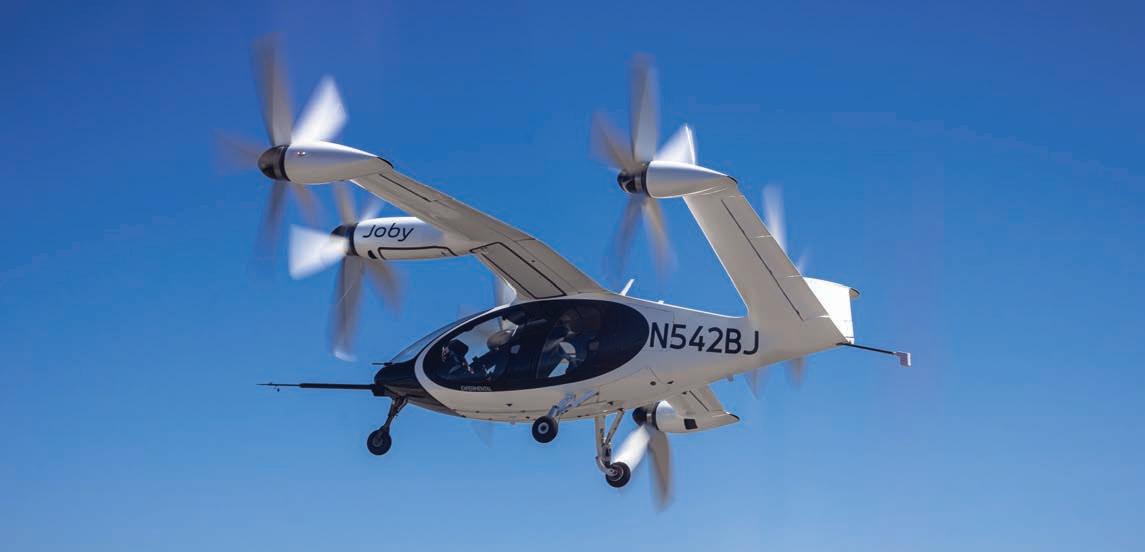 BY CHARLES ALCOCK
BY CHARLES ALCOCK
On New Year’s Day 1914, when the St. Petersburg-Tampa Airboat Line launched the world’s first scheduled, commercial airline service to connect the two Florida cities, few among even the most optimistic observers present would likely have envisaged a day when around 600 passengers could travel over 8,000 nm on a doubledecked Airbus A380 jumboliner. The 23-mile hop across Tampa Bay—at barely five feet above the waves—was certainly a “one small step, one giant leap” moment, albeit the service in the Benoist Type XIV aircraft lasted less than five months, providing, for a $5 one-way fare, a 23-minute alternative to a two-hour boat voyage or a drive that could take as long as 20 hours.
In something of a “back to the future” ironic twist, the St Petersburg-Tampa Airboat Line’s 109-year-old business model was fundamentally quite similar to the new air taxi services now promised by the 21st-century transportation revolutionaries working to use eVTOL aircraft for so-called urban air mobility (UAM) services. Early applications of all-electric vehicles, typically carrying just two to four passengers, largely consist of short flights of between 20 and 100 miles intended to bypass congested roads within large cities, and in some cases support slightly longer sub-regional services.
We’ll spare the blushes of some of the eVTOL pioneers by recalling the names of those who promised to start commercial
flights in 2023, i.e. around now. This baseline projection then got quietly pushed into 2024 and then, in recent months, into 2025.
So what’s fueling what is now commonly referred to as an advanced air mobility (AAM) revolution? The short answer is money and lots of it. A more complete answer is a mix of distributed electric propulsion and increasing automation of flight on a trajectory towards autonomous operations that will not involve a pilot being on board the aircraft.
Multiple companies, many of them start-ups with origins outside the aviation
industry, are looking to exploit the new technology to achieve a fundamental, epoch-defining shift in how people and things move around and support previously unthinkable business models. The imperative to reduce aviation’s environmental footprint is also a big motivator, especially in Europe where social consensus is increasingly demanding more from the industry and where carbon-reduction goals are being set in the chase for so-called net zero over the next couple of decades.
There is now little doubt that a version of AAM or UAM will happen, with the only questions being when exactly it will become a reality and whether it will achieve sufficient commercial scale and momentum to make a lasting impact. In fact, the technological progress being fermented is also feeding into a wider transformation of air transport, following a continuum that Airbus believes could lead to 200-seat hydrogen-powered airliners flying 2,000 nm by around 2035.
So, perhaps a better question is what’s holding AAM back? Again, the short answer is money, with the availability of new capital seemingly tightening after the boom of 2021. The more complete answer includes the limitations of current battery technology, regulatory complexity, and the need to develop extensive new infrastructure to support what AAM proponents refer to as their ecosystem.
Nonetheless, a small pack of eVTOL frontrunners now have revenue-generating flights in their sights for 2025. Joby, which started working on its plans in 2010, has been flying a full-scale four-passenger prototype for some time. In December, the FAA closed a comment period on the airworthiness criteria it intends to use for type certification of the aircraft, which is similar in architecture to other models that have embarked on the approval process.

In November, another Silicon Valley-based start-up—Archer—unveiled the four-passenger Midnight aircraft that it too aims to certify at the end of 2024. It is already flight testing the two-seat Maker
technology demonstrator and says that Midnight will take to the air in 2023.
In Europe, Germany’s Lilium aims to secure EASA-type certification for its seven- passenger Lilium Jet in 2025. This will have a range of around 155 miles, and the company is already flight-testing a subscale technology demonstrator with plans to start flying a production-conforming prototype in 2024.
Another German start-up called Volocopter is working to start services with its two-seat VoloCity model from 2024 in locations including Paris, Rome, Singapore, and Saudi Arabia. This will be limited
to flights of little more than 20 miles, but the company is also working on a four-seat model called the VoloConnect that will have around three times that range. It is also preparing to offer a freight-carrying model called the VoloDrone.
The UK’s Vertical Aerospace appears to be on a similar trajectory, having recently started hover flights with its VX-4 prototype. Like the Lilium Jet, this fourpassenger model is expected to have a similar range of more than 150 miles and be used to connect cities that don’t currently have air service, and also to feed passengers into airports.

All of these eVTOL aircraft will enter service with a single pilot on board, although Volocopter intends to transition to autonomous operations as soon as regulations permit. But some companies insist that autonomous flight is the only way to make AAM business models succeed, even if that means not being among the first market entrants. Neither the FAA, nor Europe’s EASA, has even hinted at a timeline in which they expect to be ready to permit passenger-carrying autonomous flights, albeit progress is being made in the use of drones for applications such as surveillance and light cargo deliveries.
In China, EHang insists it is close to getting type certification for its EH216 Autonomous Aerial Vehicle from the country’s CAAC air safety regulator, and also clearance to operate fully autonomous flights for applications such as air taxis and sightseeing. It is not clear to many Western observers on what basis the CAAC is ready to give the go-ahead to full autonomy.
EHang is involved in all aspects of developing the required ecosystem. In the city of Guangzhou, it is establishing a commandand-control facility to act as the nerve center for autonomous operations as well as a “5G Intelligent Air Mobility Experience Center” that includes a vertiport, battery recharging equipment, and a maintenance set-up.
Wisk Aero, backed by Boeing and Google co-founder Larry Page’s now-closed Kitty Hawk eVTOL developer, is adamant that autonomous operations are the only way to go. In October 2022, the company unveiled what it says is its sixth-generation aircraft, a four-passenger model intended to fly up to around 90 miles without a pilot on board.
The company knows it won’t be firstto-market in the eVTOL gold rush, and it doesn’t care, taking the view that it will be ready for the quantum leap into autonomous operations when regulators are ready
to offer an approval path to this stage. Wisk has already logged more than 1,600 autonomous flight test hours in its twoseat Cora technology demonstrator, at test sites in both New Zealand and California.
But not everyone is content to make do with the current limits of battery technology, which for now is capped at around 450 WH/kg in terms of energy density. For them, hybrid-electric propulsion is a far more pragmatic stepping stone, holding open the prospect of significantly greater payload and range than the all-electric crowd.
Other incentives are said to be a more straightforward path to certification with less technology risk, and also a lot of scope for converting existing aircraft to the new means of propulsion. Additionally, hybrid aircraft will be able to operate from existing airports without having to wait for battery rechargers to be widely available.
As counter-intuitive as it might seem, the late 20th-century vintage Cessna Grand Caravan (albeit still in production today) stands to be one of the first aircraft to undergo conversion to a hybrid powertrain. Several companies have their sights set on this versatile, utilitarian airframe, with Ampaire having achieved
the first flight with its Eco Caravan refit in November.
By combining a compression ignition engine in Ampaire’s integrated parallel configuration with battery packs and electric motors, the Eco Caravan could have a maximum range as long as 1,000 miles. In most commercial use cases, however, it will likely fly multiple shorter distances each day, carrying up to nine passengers or cargo.
Ampaire co-founder and CEO Kevin Noertker sees a clear path to scaling up hybridelectric propulsion in aviation. Next in his sights is a conversion of the 19-seat DHC-6 Twin Otter (to become the Eco Otter), and he expects to see 30- to 50-seat regional airliners entering service in the 2030s.
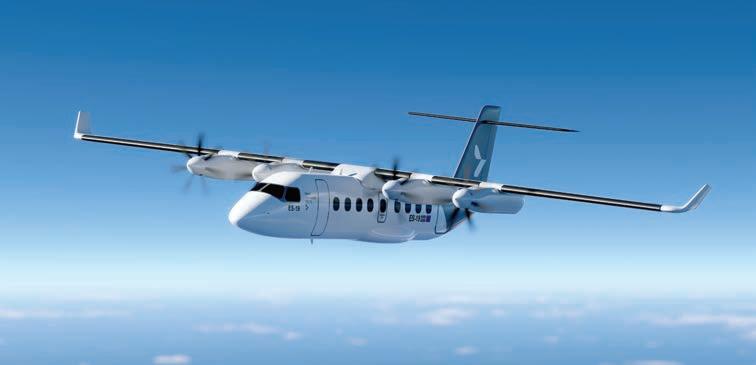
“We’re taking a crawl, walk, run approach and that’s why we’re starting with [conversions of] an existing fleet of aircraft, and will then work with OEMs to make the propulsion system standard on new-build aircraft,” Noertker told AIN. “When we get 10, 20, and 30 years from now, there will be multiple [electric-powered] clean-sheet airplanes.”
Also seeking a more direct path to market while making the most of available technology is Electra, with its hybrid-electric short takeoff and landing (STOL) aircraft. The Virginia-based company is tapping blown-lift aerodynamics to develop a fixed-wing model that it says will carry
Heart Aerospace is developing a 30-seat hybrid-electric regional airliner called the ES-30.
nine passengers or 1,800 pounds of cargo, and be able to operate from sites such as heliports with no more than around 300 feet available.
In Scandinavia, where both the Norwegian and Swedish governments are pushing for the early phasing out of domestic flights depending on fossil fuels, Heart Aerospace has plans for a 30-seat regional airliner called the ES-30. The September 2022 announcement marked a change in strategy prompted by Air Canada and other prospective launch customers to boost payload and range by abandoning an earlier plan for a 19-seat all-electric model called the ES-19. The switch will cost the Swedish company two years, with certification and entry into commercial service now projected for 2028.
But for some AAM trailblazers, hydrogen power is the true holy grail. Ground testing of both direct combustion and fuel cellbased systems is underway, but the new fuel poses significant challenges in terms of storage and distribution.
Companies including ZeroAvia and Universal Hydrogen are preparing to integrate their fuel-cell-based powertrains into existing regional airliners like the de Havilland Dash 8 and the ATR 42, with ambitions to bring 40- to 80-seat aircraft to market by 2027. ZeroAvia is starting with the conversion of the 19-seat Dornier 228 twin turboprop and says this could be ready to operate the world’s first hydrogen-powered scheduled airline services as early as 2024.
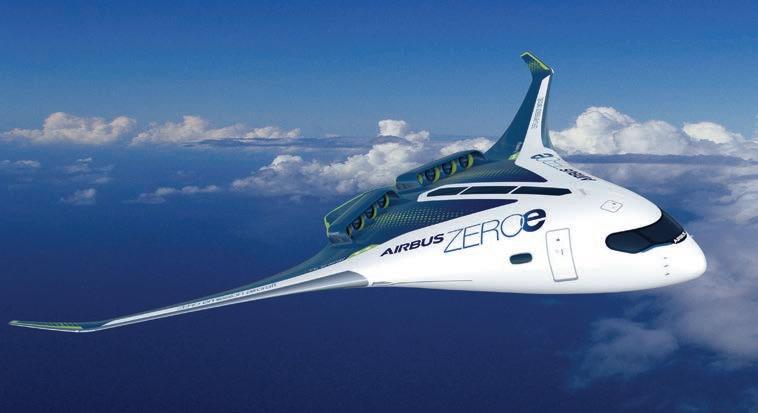
The switch to hydrogen, which its advocates maintain is the true green fuel, is dependent on an extensive rollout of fuel supplies at airports. The pioneers are making their own efforts to jump-start the expansion of this critical ecosystem, which they hope will be faster than the rollout of sustainable aviation fuel, but it seems clear that only the buy-in of oil industry giants will result in sufficient momentum worldwide. Shell last year made a commitment
that could prove to be a breakthrough.
By contrast with its rival Boeing, Airbus is foremost among the hydrogen evangelists. When it announced its Zero E project in September 2020, Airbus said it expected to be ready to choose from three possible airframe concepts by 2025, leading to a full program launch in 2027 and entry into service in 2035. The European aerospace group is also working on an eVTOL design called the CityAirbus NextGen.
One of many fascinating aspects of covering the space-race vibe of this new wave of aviation technology and business models is the culture clash between aerospace behemoths like Airbus and the upstart advocates of a new Year Zero for the industry in which old assumptions sometimes seem to be cast aside for dramatic effect.
In recent years the capital-hungry have made some very aggressive pledges to prospective backers about achieving an unprecedented rapid market entry with radically new aircraft and a fast-track to commercial returns. Several of these pioneers are now somewhat discretely eating humble pie, having had to tactfully push back certification timelines in the face of regulatory realities.
In a further sign of realism getting a grip, the past 12 months or so have seen a rapprochement between the upstarts and aerospace royalty, with industry leaders like Rolls-Royce, Honeywell, Collins, and
GKN taking key roles in several of the more promising new aircraft programs. At the same time, the door remains open for aviation to learn some critical new tricks from the automotive industry, which has plenty to teach it about the mass production that will be required if AAM ever fulfills its promise to scale up at a pace the St. Petersburg-Tampa Airboat Line’s founders would have found dizzying.
While the energy created by the new wave of aviation’s over-caffeinated hyperbolists has surely provided a welcome shot in the arm for an industry demoralized by the fallout from the Covid pandemic, the fact remains that the course of aerospace progress is still measured in decades. The 2020s remain on course to be the decade that sees distributed electric propulsion reshape short-haul transportation, and, perhaps optimistically, this should be followed by more momentum moving into the 2030s.
What remains to be seen in the wider picture as the world moves towards the 2050 net zero mandate agreed by the United Nations COP climate change conferences is the extent to which various regulatory carrots and sticks might be used to turn air transport increasingly green. In this regard, the 2040s seem more likely to be crunch time, and the impact of this change by then may be largely determined by the success, or otherwise, of market-led initiatives.
Two years have passed since the UK formally exited the European Union (Brexit) and a new set of rules and regulations covering trade, travel, and business came into play.
Europe’s business aviation community continues to reel from the break-up, which initiated a host of unwelcome changes to the regulatory and operational landscape.
“Although a lot of time has elapsed since the transition period ended [on Dec. 31, 2020], it has been a challenging period, not least for the commercial operators in the UK and EU, which overnight went from having unfettered access to each other’s airspace to holding the far inferior third country operator status [TCO], with new rules and restrictions to navigate,” said Marc Bailey, chief executive of the UK trade body British Business and General Aviation Association (BBGA).
His view is echoed by Robert Baltus, chief operations officer for the European Business Aviation Association (EBAA), who suggests that Brexit and the subsequent trade agreement between the EU and UK have caused “an unnecessary increase in red tape” for its members.
He slams Brexit as a “political choice based on many one-liners, by politicians with limited knowledge of the benefits of having open borders, free movement of goods and staff, and one large market.”
For EBAA’s EU-based members, there is an “overwhelming sadness about the loss of the UK as a leading partner in Europe and main contributor to regulators and institutions like EASA [European Union Aviation Safety Agency],” Baltus conceded.
Even the small group of UK-based members who still support the idea of Brexit “are realizing that the perceived benefits
MARC BAILEY CHIEF EXECUTIVE, BBGA
are hard to gain due to the loss of market for their services and due to the increased red tape surrounding operating flights around Europe.”
Baltus believes the UK business aircraft industry and its consumers have been hit particularly hard by the Brexit fallout, largely as a result of the decline in the number of aircraft being available for internal flights—with cabotage no longer permitted. Preliminary data from the EBAA reveals the tally of UK (G)-registered business jets fell by 20 percent between February 2020 and October 2022 from 315 to 255, with aircraft largely shifted to EU-based registers and air operator certificates (AOCs) mainly in Malta, Ireland, and Austria.
The loss of unrestricted access to the UK market has nonetheless been a blow to many EU charter providers given the country’s huge draw as a thriving business, finance, and leisure destination. “It’s one of the largest and most important markets in Europe,” said Bailey.
To soften the impact on EU operators’ post-transition, the UK government via the Department for Transport (DfT) and Civil Aviation Authority (CAA) permitted EU operators to continue exercising third and
fourth Freedom rights—allowing flights to and from the UK—under a three-month block permit agreement that it hoped would be mirrored by other EU regulators.
This concession was one-sided initially, however, leaving non-scheduled UK carriers having to secure costly and time-consuming permits on a flight-by-flight basis.
“It was a frustrating time for UK operators in early 2021 with many losing bookings to EU competitors as a result of this clunky system,” said Glenn Hogben, chief executive of the European trade body Air Charter Association (ACA).

Frustrations were fed back to the DfT and CAA, forcing the pair to stipulate to their EU counterparts that renewal of the UK’s block permit would be conditional on each country providing a reciprocal arrangement for UK operators.
This approach has largely paid o ff , not least because of the pressure heaped on EU countries by their national operators keen to continue hassle-free access, albeit on a more restricted basis, with the lucrative UK market. To date, 18 of the 27 EU member states have reciprocal multimonth permits in place with the UK, said Hogben—with others pending.
Bilateral agreements—outlining what is required for each type of flight—have been concluded between the UK and 21 member states. Of the remaining six countries, five are still in negotiations with the UK, and one, Romania, “does not want to do a bilateral,” Hogben revealed.
These bilateral agreements with the UK are wide and varied, he explained. “Latvia does not require UK charter operators to have block permits for Third and Fourth Freedoms as long as the aircraft has no more than 10 seats and has a maximum takeoff weight of less than 5.7 tonnes [5,700 kg/12,566 pounds].
The Czech Republic has a seat limit of 19 but no restriction on mtow. For Malta, the limits are 19 seats and 10 tonnes, while Portugal and Germany permit these lower Freedoms to UK operators with aircraft up to 20 seats and weighing 10 tonnes and under,” said Hogben.
Of course, given the nature of business aviation, many flight requests do not fall into the basic Third and Fourth Freedoms. More complicated itineraries involving flights within or to and from several EU countries are common and fall into higher Freedoms, many of which are not covered by UK-EU bilaterals or the block permits, Hogben noted.
This is particularly acute for cargo operators whose business models frequently involve time-critical flights between several countries.
BBGA’s Bailey said Fifth Freedom rights—flights between two countries from the home base—were granted “from the beginning” for cargo flights because of the nature of the industry. “What cargo operators can’t do now is use the Seventh Freedom to pick up cargo from A and take that on to B [without touching the homebase] unless they have a permit.”
These operating restrictions have been a huge blow for UK specialist charter company RVL Aviation. “Losing our unlimited access to the internal markets of 27 countries has

impacted our business, with the permit system making time-critical and Seventh Freedom cargo flights more complicated,” said RVL chief executive Dave Connor.
The company’s cargo-configured Saab 340B became a casualty of the new operating framework.
“The aircraft became commercially unviable to run, so we handed it back to the lessor,” noted Connor.
RVL, which provides passenger, freight, and surveillance services with a 10-strong fleet of Beechcraft King Airs and Cessna F406s, is adjusting its business model to reflect the new operating environment.

“We are in the planning stage of securing an EU-based AOC to re-establish a European footprint,” said Connor. The East Midlands Airport-based company is also exploring
“overseas opportunities” in specialist segments such as survey and surveillance where “the operating landscape is less prohibitive.”
Connor’s frustration with the “operating landscape” is shared by George Galanopoulos, chief executive of VIP charter and management company Luxaviation UK.
operating with the UK market,” he said.
Abdel El Hamdi, director of charter sales for Luxaviation Germany and Luxembourg, calls the collaboration with its UK stablemate “vital in the post-Brexit operating environment.” While block permits for Third and Fourth Freedom flights are a positive offering from the [UK] CAA, he conceded, “it is frustrating that we cannot operate unhindered any longer within what is the biggest market for private aviation in Europe.”
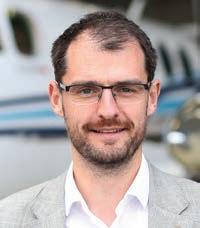
El Hamdi’s exasperation is shared by VistaJet, the Malta-headquartered high-end charter provider and one of Europe’s largest operators with a multi-model Bombardier fleet.

during business hours and on business days, but given that many companies in our space run a 24/7 operation it would be great to see this practice updated,” said Moore.
As an added woe, cabotage rules for third-country operators prevent VistaJet from picking up passengers within the UK and transporting them internally.
DAVE CONNOR CHIEF EXECUTIVE, RVL AVIATION“If we want to fly a customer, say from London to two or more EU countries, we have to ask permission from each state, and approval can take a minimum of 48 hours, depending on who you are dealing with. On top of that, several states have a non-objection system whereby we have to give all qualifying local operators the opportunity to accept or turn down the EU legs of the flight,” he added.
This added layer of bureaucracy is unwelcome, and while some countries regularly grant permission for the flight within the 48-hour window without objection, others are not so compliant. Galanopoulos will not name the recalcitrant territories, but leading business aviation markets France and Germany are regularly cited as inflexible.
“It’s fine if you have plenty of notice for the charter flight, but it is very difficult to accept bookings with lead times of less than 48 hours now, so we are missing out on valuable business,” said Galanopoulos.
Some of this work is picked up by Luxaviation’s network of operators across the EU to keep the business within the group. “Likewise, we provide support for our European partners who face similar challenges
“The situation is so disheartening,” said VistaJet chief commercial officer Ian Moore. “The ease of doing business between the EU and the UK has now gone because new barriers have been erected. That really can’t be good for any party.”
With VistaJet’s ability to fly within the UK now “severely curtailed,” the impact is being felt most acutely by customers of its VIP charter program who have acquired hours that they wish to use on UK-based flights.
For customers wishing to fly into London and then on to another part of the UK, no less than 48 hours notice is now required. Permissions could take even longer if the request is submitted outside the CAA’s traditional working hours of 9 a.m. to 5 p.m. Monday to Friday and particularly ahead of a weekend or bank holiday.
“The CAA is not alone among the global aviation authorities in only issuing permits
To fulfill its contractual obligation, VistaJet sub-charters aircraft through local UK AOC holders, but this service has come at a huge expense. “The price to conduct internal UK flights has gone through the roof,” said Moore. “These are well and truly above what people would consider normal for a typical one-hour or one-andone-half-hour flight.”
VistaJet is now mulling the idea of offering a dedicated, in-house operation to serve the UK market—by “possibly” acquiring a local established operator or setting up a UK AOC with G-registered aircraft sourced from its current line-up. This could also include aircraft from its sister company Air Hamburg. The German charter and management provider was snapped up earlier this year by VistaJet’s parent company Vista Global. “It’s definitely a consideration, but this could create other issues and problems for us such as unwelcome empty legs,” he added.
Moore describes the UK as one of VistaJet’s stronger European markets. “Not only do we have a sales and marketing base in London housing a decent number of employees, but many of our international
clients have homes, businesses, and even children attending school in the UK, and they want to spend time there,” he said.
And the demand for the UK as a destination sees no signs of letting up. “The UK—London in particular—fits in as part of a customer’s portfolio of flights and the last thing we want to do is say ‘no’ [to a request] as they will take their business elsewhere,” Moore conceded.
“People enter into a multi-year contract with VistaJet because they trust us to deliver a high-end, reliable service, that is why it is important to find a cost-effective and efficient solution for the UK market,” he added.

Brexit has not only produced a less favorable operating environment for commercial operators, pilots and maintenance personnel have also been impacted.
The CAA’s reestablishment under the trade agreement as a separate oversight organization from Jan. 1, 2021, resulted in EASA no longer recognizing UK-licenced pilots and engineers. The UK regulator
extended its licensing recognition to Dec. 31, 2022, for EASA-approved personnel, but from January 1 those pilots and engineers who do not have a CAA license will no longer be able to work for UK companies or operate on UK-registered aircraft. These new personnel licensing regulations have restricted considerably the pool of talent available to UK-based maintenance providers. “I know that British Airways is looking for some 300 engineers and those are not available in the UK market. A similar number are also needed at Bombardier’s recently opened business aircraft maintenance facility at London
Biggin Hill airport,”
The UK is “nowhere near generating enough homegrown talent” with the challenges having increased through the Covid pandemic.
He fears the shortage of licensed personnel will drive up salaries that only the larger corporations will be able to afford. “This will leave SMEs [small and medium-sized enterprises] in a vulnerable position,” said Bailey.
To plug this gap in the short term, Bailey is calling on the UK government to establish a fast-track recruitment process with the EU and other international bodies to allow local companies
UK aerospace and air transport companies are facing further uncertainty over the country’s postBrexit regulatory framework resulting from a new law that is set to remove at least 2,400 pieces of legislation based on European Union (EU) law. The Retained EU Law (REUL) bill, which has already passed two of three sets of votes in the UK parliament, would remove hundreds of aviation-related laws from the statute books under “sunsetting” rules taking e ect on Dec. 31, 2023.
Critics of the bill have complained that the UK government has yet to fully clarify exactly which pieces of legislation would be scrapped and when and how the new laws might replace them. A UK government “public dashboard” provides some detail on the volume of laws covered by REUL in terms of identifying broad
categories covered by each government department, but there is almost no detail on specific items.
The dashboard shows that more than 400 pieces of transport-related legislation would be covered by the REUL sunset process and that up to around 100 of them could be specific to aviation. There is some indication, for instance, that laws covering passenger rights, airline market access, airspace management, aircraft noise, and emissions trading could be removed.
The Department for Transport has indicated it is still considering details, such as what rules, if any, might replace those items. The REUL bill makes some provision for the “sunsetting” deadline to be pushed to 2026 following a departmental review process.
Members of parliament are still seeking to block or amend the bill, which has faced opposition even from within the ruling Conservative Party. On November 22, the government’s Regulatory Policy Committee criticized the bill as being “not fit for purpose” and complained of an inadequate impact assessment.
The UK’s Aerospace, Defence, Security & Space (ADS) industry association has not commented publicly on specific aspects of REUL’s potential impact on its members. “We will work closely with the CAA, industry, and government to understand any potential impact of the scope of the UK’s Retained EU Law legislation on the aviation and aerospace sectors as it moves forward,” said ADS chief executive Kevin Craven in a written response to questions from AIN. C.A.
Best of
Throughout the year, our AINalerts newsletter readers have submitted many interesting and eye-catching pictures for the Friday Photo of the Week feature. We would like to share a sampling of the these with you and express our appreciation for all your submissions. Keep them coming!
Aviation communications veteran Mike Potts shared this photo of the “amazing” Milky Way taken at 39,000 feet over northern Arizona from a Southwest Airlines Boeing Max 8. A faint glow from Phoenix is captured at the bottom of the picture.

Chris Yoder, a Dassault Falcon 8X captain for a Colorado-based flight department, took this photo while departing Eagle County Airport (KEGE) headed to the West Coast. “The FalconEye in our new 8X is a great tool, and the sunset and EVS created what I thought to be a beautiful picture.”

Corporate flight department chief pilot Tim Bussard snapped this image of his company’s brand-new Cessna Citation Longitude during sunrise at its home base at New Castle Airport (KILG) in Wilmington, Delaware. We like the smell of a new airplane almost as much as the aroma of jet-A in the morning.
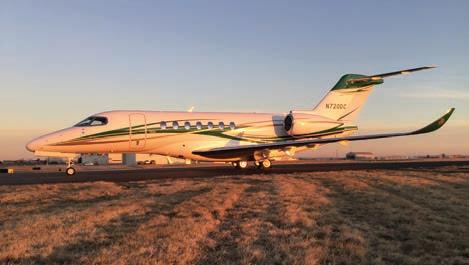
Michael Hodel took this image from his Dassault Falcon 900LX while he was flying by Mount Rainier (elevation 14,410 feet msl) on the way from Seattle Boeing Field/ King County International Airport (KBFI) to Portland International Airport (KPDX).
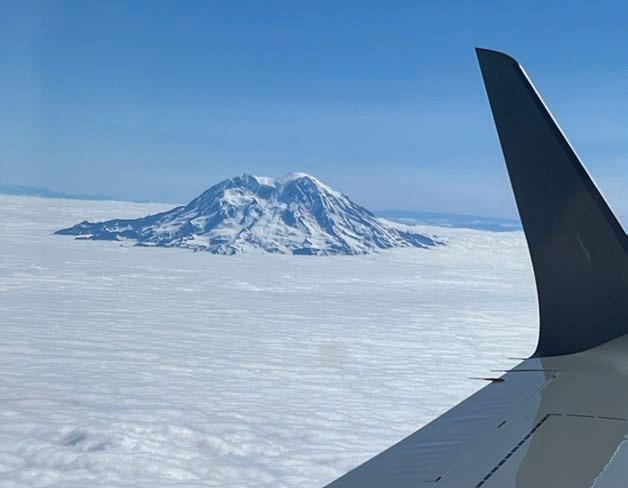
Corporate pilot Luke Egan snapped this image while his Gulfstream G650 was on approach into Wyoming’s Jackson Hole Airport (KJAC). “The HUD and SVS really capture the magnificence of the Grand Teton,” he said. We agree!

Corporate pilot Michael T. Richards snapped this photo of his company’s Eclipse 500 at exactly the right time during a fiery sunset while the twinjet was parked for the night at Hetrick Air Services in Lawrence, Kansas.


Corporate pilot John Niewoit Jr. took this photo of his company’s Embraer Phenom 300 at sunrise on the Signature Flight Support ramp at Detroit Metropolitan Wayne County Airport (KDTW). He noted the morning dew still on the airplane as the sun peeks just above the horizon.
Corporate pilot Brian Sloan snapped this photo on March 18 during a calm evening over Tampa Bay, Florida. But off in the distance— actually, all the way across the Sunshine State—was a thunderstorm passing over the Melbourne area.
If you’d like to submit an entry for Photo of the Week, email a highresolution horizontal image (at least 2000 x 1200 pixels), along with your name, contact information, social media names, and info about it (including brief description, location, etc.) to photos@ainonline.com. Tail numbers can be removed upon request. Those submitting photos give AIN implied consent to publish them in its publications and social media channels.

One of the most storied lines of business aircraft began in the mid-1950s with something of a leap of faith—to invest in a modern turboprop-powered executive transport that would compete against the huge surplus of cheap, repurposed World War II-era airplanes that had been awkwardly pushed into that role.
After first considering a similar route, by adapting its amphibious, piston-engine Widgeon or C-1 Trader military hauler to the corporate role, Grumman Aircraft Engineering determined the best solution to meet the needs of an expanding base of corporate fliers lay in a fresh, low-wing design with a true stand-up cabin.
The company began work in 1956 on what would become the G-159, more popularly known as the Gulfstream I, with the first prototype flying in August 1958. Powered by dual Rolls-Royce RB.53 Dart turboprops and offering seating for as many as 24 passengers, the GI was designed with key input from early depositors who
shelled out $10,000 apiece for production slots.
The result was a modern, speedy, and pressurized corporate aircraft that looked purpose-built to impress. Tall, retractable tricycle landing gear, necessary to clear the massive Rotol prop blades, ensured its ramp presence, while the smooth, clean wing offered impressive efficiency, range, and speed for the time.
Corporate customers responded, with 200 GIs built over the next decade for buyers as varied as Walt Disney, Ford Motor Company, and NASA. Grumman also explored a stretched version, dubbed the GI-C, for regional airline use; only five were produced.
Nine TC-4C Academe variants were also built as trainers for the A-6 Intruder attack aircraft. That adaptation hinted at the GI’s talents as a multipurpose platform, which became clearer two decades after the last airframe left Grumman’s Bethpage, New York production facility in 1969.
Now there are only about a half-dozen of the model still in service, split between North America and Africa.
Georgia-based Phoenix Air Group acquired its first GI in 1989, adding seven more over the next decade and another eight in 1999, when the company purchased aircraft and parts from a government-owned Venezuelan petroleum supplier.
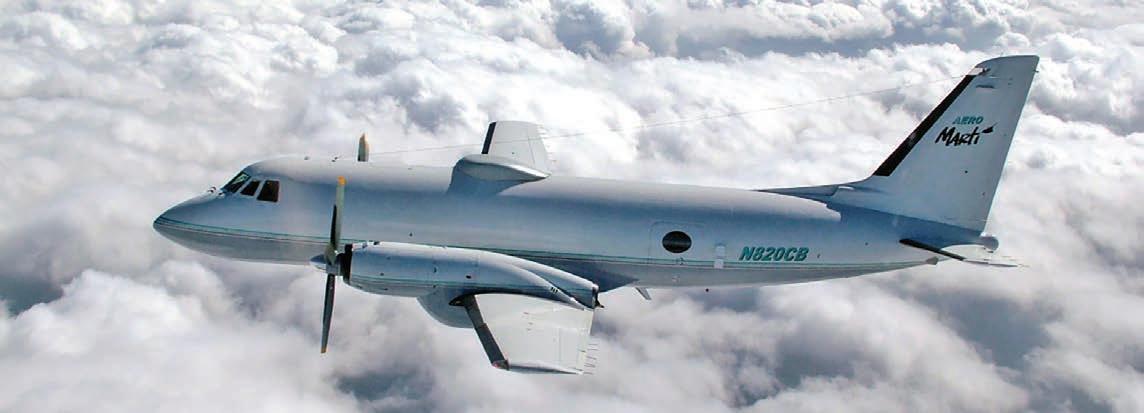
“The GI is one of the most solid and reliable aircraft we’ve ever flown,” said company senior v-p and COO Dent Thompson. That sturdy construction stemmed from Grumman’s wartime experience, he added, down to rudder pedals with openings large enough for a pilot’s foot to pass through, allowing them to maintain yaw control even with a wounded leg.
“We’d also use that as our resting posture when flying,” laughed Dave Greer, program manager for special missions operations. “Talk to any Gulfstream pilot today, and
you’ll see the scuff marks on their shoes.”
That was just one legacy GI feature carried over to subsequent aircraft. The basic configuration proved so robust that Grumman (later Gulfstream Aerospace) continued with the same forward fuselage and cabin in the GII business jet and on through the G550 family.
Phoenix Air operated its GI fleet for more than 30 years in a wide variety of roles, from civil cargo and air ambulance operations to supporting government missions ranging from radar testing and electronic warfare and simulator training to more clandestine purposes.
For example, the company stood up a dedicated GI fleet out of Key West, Florida, in support of AeroMarti, an airborne radio (and later television) transmission platform that broadcast into Cuba until 2014. “We flew for at least six hours at a time, transmitting Major League Baseball, telenovelas, and certain… ‘commercials,’” said Steve Christopher, v-p for military programs.
Ivan Betancourt, Phoenix Air’s quality assurance manager for Gulfstream aircraft, noted the GI pioneered systems that would prove vital to the company decades later. “It was one of the first civil airplanes with an APU [auxiliary power unit], which was new technology in business aviation,”
he said. “We took advantage of that to generate the power needed for special missions equipment.”
Fitting an entire broadcast studio into the GI’s cavernous cabin did pose some issues, however. Even after stripping out interior panels and sound insulation, “the system was packed in the back [and] there just wasn’t an air-conditioning system sufficient to dissipate that heat,” Christopher said. “We flew high enough so the heat radiated through the skin.”
Other missions saw the aircraft flying across the rugged terrain of South America. “We’d depart out of Guatemala City at night in the middle of thunderstorms,” recalled pilot Henry Hiteshew. “The props would sometimes [throw ice] and hit the fuselage, and that’s when you’d think about seeing your family again—but that airplane was a tank.”
“I just loved working on the airplane,” added Betancourt, who—like Hiteshew— came to Phoenix Air from the former Venezuelan operator. “The GI was not an easy or simple airplane by any means; it was complicated, but it gave me a lot of gratification to work on the airplane and then see it perform so well.”
The aircraft also proved surprisingly reliable, even as OEM parts supplies dwindled. Phoenix Air implemented several procedures to keep the airplane flying, from mounting specialized equipment brackets to

replacing welded control surface skins with riveted panels to facilitate corrosion repairs.
“We received an approval for those repairs and others through an AMOC (alternative means of compliance),” Christopher explained. “Grumman personnel simply never expected that GIs would be flying as long as they did, or ever thought their aircraft would be used like we used it.”
Years later, he continued, “we hosted one of the original GI engineers and we showed him around the airplanes and what we’d done to keep them flying. It was like his child had grown up. He was just so proud.”
Another point of pride came during a family day hosted by Gulfstream Aerospace to showcase its then-new G650 against the backdrop of its previous aircraft lines. Greer noted Phoenix Air sent a GI and GII business jet to Savannah, Georgia, for the event.
“They parked our GI next to a G650, and guess which line was longest?” he recalled. “People were lined up around the block to see inside the GI.”
Even with its particular talents in special operations, the GI’s tenure with Phoenix Air ended in October 2021, with newer airframes assuming most of its missions. The company hosted a June 2022 luncheon celebrating the aircraft’s time in the fleet, its role in supporting Phoenix Air’s operations, and its importance to corporate aviation.
“The mighty GI will live on in Phoenix Air memory,” Thompson said.
“It was an awesome airplane,” Christopher added. “Of course, today’s modern turboprops come out ahead on maintenance and moneywise—those big, loud Darts suck a lot of gas—but even now I think it’s hard to find a good, solid airplane that offers the same range, endurance, speed, and cargo capacity.”
In fact, when asked if any one modern aircraft can fulfill the same breadth of missions as the GI, Christopher offered a blunt response. “The short answer is no.” z
No one seems to know why the FAA changed the Disney Gulfstream I’s registration number to “MM,” but it can’t possilby be coincidental that it stands for “Mickey Mouse,” and air tra c controllers quickly got used to radioing, “November 234 Mickey Mouse.”

While Walt Disney used various commercial and business aircraft to support his many entertainment, entrepreneurial, and philanthropic projects, the one most closely associated with the man and his dreams was his beloved Grumman Gulfstream I.
Think about it: in one way or another, whether through movies, TV, or a visit to the “Happiest Place On Earth,” the talents of Walter Elias (Walt) Disney have touched all of our lives.
Disney was a gifted storyteller and visionary with uncommon curiosity. And one thing he was particularly interested in
was the various means by which one could visit far-off places.
miles to see Calbraith Perry Rodgers land the Vin Fiz Wright Flyer EX in Kansas City during the first transcontinental flight.
IT’S A
AFTER ALL “Walt was interested in all forms of transportation. We all know how much he loved trains, but he was also intrigued by ocean liners,” explained Rebecca Cline, director of the Walt Disney Archives. “He traveled the country extensively by train and made frequent crossings to Europe.”
Cline said Disney had also been intrigued by aviation. In 1911, as a 10-yearold, he and his older brother Roy ran two
But, while various factors kept flying out of reach, it never left his heart. It wasn’t until years later, while on one of his trips to Paris, that Walt finally realized his dream of flight.
“Walt was in Paris at the end of World War I and while on tour, he spotted a French military airplane sitting in a field,” explained Ed Ovalle, senior archivist at Walt Disney Archives. “He wanted to take a flight, but the officers told him it was only for French military personnel.”
His philosophy was, “the way to get started is to quit talking and start doing.” So, he did. As he related the story, later on, Disney said, “But 50 francs I had saved up made a French aviation mechanic wink at the law, and I had my thirst to fly satisfied for the first time.”
While Disney understood the benefits aviation would bring to his growing movie production business, aviation in the 1930s and ‘40s, like ink and paint animation, was very expensive. But, as his business grew, he increasingly used commercial flying to complement his travel needs. Aviation introduced him to a new world of efficiency and flexibility.
“In the late 1950s and early ‘60s, he was traveling so much between California and his various projects in the Central and Eastern U.S. that he decided to try private aviation,” Cline said. “He started chartering airplanes out of Burbank, and then in 1963 he purchased his first airplane, a new Beechcraft Queen Air 80.”
But, as capable as the Queen Air was, as his projects continued to grow and spread across the country, its limited speed and range couldn’t keep up with Disney’s demanding schedule.
“In particular, he was making frequent trips to New York in preparation for the 1964 World’s Fair,” Ovalle added. “To make those trips easier, Walt bought a new Grumman Gulfstream I turboprop. Now he could make it from California to New York nonstop.”
While there were undoubtedly earlygeneration business jets available to him, Disney was sold on the Gulfstream’s long, large, and comfortable 15-place stand-up cabin.
“The Gulfstream allowed him to no longer rely on commercial airlines. He could set his schedule and go wherever he wanted,” Ovalle said. “He had several projects in the works, and the airplane allowed him to visit many
airports that the airlines didn’t service.”
One interesting side note is that the Gulfstream’s original N-number was 732G, which it kept until 1963 when it was changed to 234MM. While “Mickey Mouse” would seem the perfect “vanity plate,” according to Ovalle, the company didn’t request the number; it was what the FAA changed it to. Perhaps it was just Oklahoma City’s way of paying homage to Disney.
Anyway, it wasn’t long before N234MM was nicknamed “the Mouse.” Cline added that as air traffic controllers became aware of the airplane’s owner, it was often called November 234 Mickey Mouse
“He really loved his flying office,” Cline said. “There was no wasted time when he flew. He could have his home team of Imagineers on board, which was point-topoint working. That was Walt. The airplane was a great business tool for him.”
And while Disney wasn’t a licensed pilot, he loved to spend time in the flight deck. Another nod to his interest in flying, his crew had his favorite seat—in the back, left corner of the cabin—equipped with an altimeter, a Mickey Mouse clock, and a dedicated phone he could use to talk to the pilots.
With its range and ability to land at smaller airports, Cline explained that the big turboprop was a great asset when Disney and his team went on scouting missions looking at locations and details for new attractions or movies.
“For example, because Walt was a stickler for accuracy when they started to research the setting for a new attraction at Disneyland, they flew down to San Juan, Puerto Rico, to visit the famous Castillo San Felipe del Morro fortress,” Cline said. “That became one of the locations found in our Pirates of the Caribbean attractions.”

And, of course, there were frequent trips from California to Central Florida as Disney and the team began “The Florida Project.” It was probably due to the regularity of those cross-countries that the decision was made to upgrade to a new Gulfstream II jet.
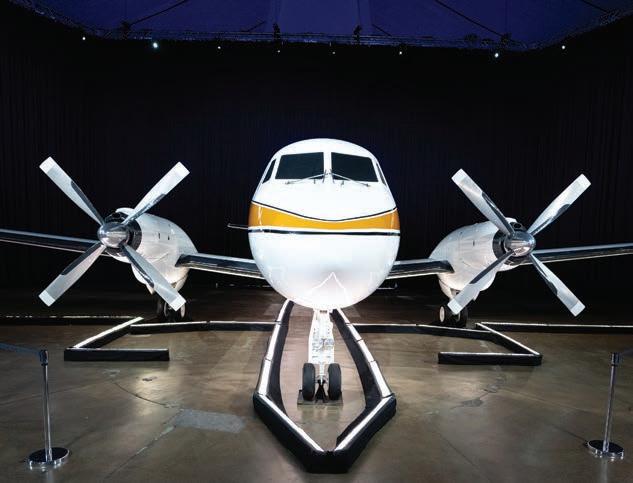
Unfortunately, Disney passed away before the new jet was built, so the order was canceled.
While the Gulfstream’s primary mission was for business use, the much-loved Mouse made frequent family vacation flights around California and to the Disney family’s weekend home in Palm Springs.
In fact, Disney’s last trip on the Gulfstream was flying back from Palm Springs to Anaheim on Nov. 30, 1966.
After his passing, the airplane continued to serve the company’s missions in the Western U.S. until it was transferred to full-time operations out of Orlando in 1985.
With Walt Disney World open and crosscountry flying being taken over by jets, the Mouse became a full-time flying ambassador for the company’s numerous charitable and educational outreach programs.
After 20 years in that role, on Oct. 8, 1992, Disney’s beloved GI made its last landing on World Drive in the center of Disney World property.
During its nearly 30 years of service, the GI had accumulated almost 20,000 flight hours and transported an estimated 83,000 passengers.
“Because of its significance to Walt, the decision was made to make the Gulfstream
part of the Backstage Studio Tour at the then-recently opened Disney-MGM Studios theme park,” Cline said. “After nearly 20 years as an attraction, and with the reimagining of the park, the airplane was moved to a non-public location in 2014.
“That’s when we started trying to decide what to do with it for the long term,” she added. “Our Imagineers in Orlando took care of it the best they could. The engines and cockpit had all been removed when it was relocated to the park, but the windows were leaking, and it had other areas of corrosion. It was never going to fly again.”
repainted the airplane in the orange and black Walt Disney Productions’ scheme Disney’s wife, Lillian, selected back in 1963.
“We were kicking off the Disney Company’s birthday celebration, and we felt D23 was a great way to show off Walt’s airplane,” she explained. “When D23 ended, the airplane was disassembled and trucked to the Palm Springs Air Museum for long-term display.”
“Everyone here is extremely excited to welcome Walt’s airplane to our collection,” said Fred Bell, vice chairman of the Palm Springs Air Museum. “I saw the airplane on display 35 years ago and said it needed to be in a museum. We’re thrilled it’s coming here.”
Bell said that initially, the airplane will be put in the museum’s outdoor display, but a new indoor facility is under construction. Phase one of the exhibit opened on December 5 to celebrate Walt’s 101s t birthday.
During the celebration, Cline announced the museum would work with Phoenix Air to restore and recreate the interior. “Ultimately, we will refurbish the...cabin to give visitors a chance to see what it was like when Walt used it,” Bell added.
After much deliberation, Cline said the decision was made to refurbish the exterior of the GI and truck it to southern California for display during the D23 Expo, a fan event held in September in Anaheim.
Before being disassembled and trucked from Orlando to Anaheim, Disney Imagineers
“We’re also going to put vinyl coverings over the windows, and the one beside Walt’s seat will have his silhouette in the window,” he said said. “It will be a neat easter egg for Disney fans.”
“Walt had a family vacation home in Smoke Tree Ranch in Palm Springs, which is very close to the airport,” Cline added. “He and his family flew in and out of there a lot, and I think having the Mouse on display at the museum would make him very happy.”
I saw the airplane on display 35 years ago and said it needed to be in a museum. We’re thrilled it’s coming here.
Catch up on the news of the week, and other important stories you might have missed with the AIN Weekly Digest

AIN’s newest o ering from our market leading AINalerts newsletter series. Delivered to your inbox every Saturday. The Weekend Digest includes the most important stories from the past week as defined by your peers in the industry, plus other key developments curated by our content experts.
Not already a subscriber to AINalerts?

ainonline.com/ain-alerts-subscribe


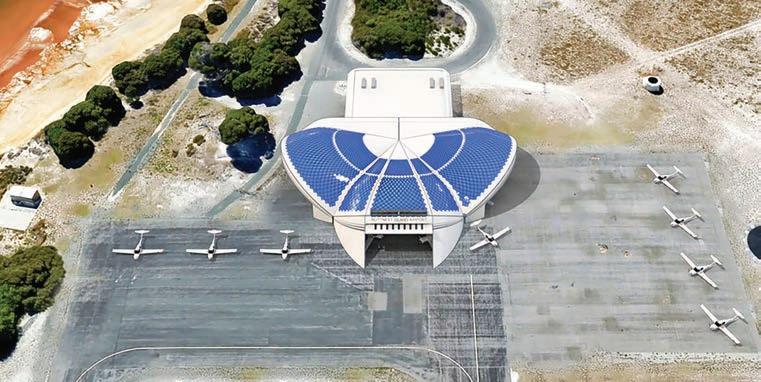 BY MARK HUBER
BY MARK HUBER
If you think you can model eVTOL aircraft charging based on the same systems used for electric cars, think again.
That is the message from Josh Portlock, the CTO of Electro, an Australia-based company that manufactures electric aircraft charging products. Portlock delivered his pitch at the recent Vertical Aviation Safety Team (VAST) conference.
“The electric aviation revolution is coming and we are going to need high power standardized charging infrastructure to scale with global demand,” Portlock said.
“Aviation charging is very different from automotive charging. Aircraft can’t drive right up to the charger like a car can, and they have wingspans to deal with. You need to move the charger and plug it into the aircraft because it’s likely out on the apron, with maybe half a dozen aircraft that might be in the way. You want to make sure that you can, as quickly as possible, start charging an aircraft.”
Aircraft are also going to need more power, which means thicker, longer, and heavier charging cables, perhaps integrated cooling systems for MW capability, high voltage to the site, and the ability to bank power on site from both the grid and on-site generation from sources such as solar.
And the industry needs to continue its work on the standardization of charging hardware, including power plugs. “There’s more than half a dozen different DC fastcharging standards in the world,” Portlock noted. “Now that’s fine if you are a Tesla [electric car] and you’re building millions of cars, have hundreds of engineers, and can cater for all those different standards when you ship your cars around the world; but not so much when you’re a low-volume aircraft manufacturer with an international market. You want that same aircraft to be able to charge with the same standard anywhere in the world. As [eVTOL] aircraft
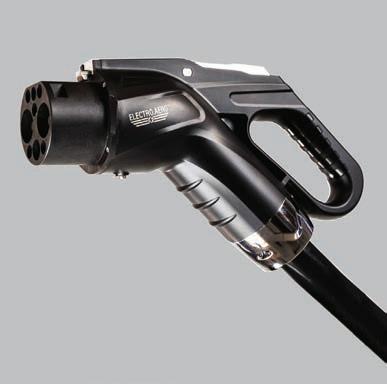
range gets longer, you want to be able to fly between regions, between countries, without having to use adapters and carry additional charging hardware with you.”
That philosophy includes eschewing AC/ DC charging converters on the aircraft or AC couplers on power plugs in favor of wheeled, portable, DC fast chargers with dual ports that can be easily moved by one person up to the aircraft. Electro has developed several of these Rapid series DC chargers in the 30- 80-kW power range that are compatible with SAE AS6968 standards developed for the design and minimum performance requirements of the connection set of conductive charging systems used for charging electrically powered aircraft.
The 80-kW charger features Wi-Fi and Bluetooth connectivity to enable telemetry reporting and over-the-air software updates and is rated IP53 for resistance to water sprays and dust. (IP or
“International Protection” is the standard developed by the Comité Européen de Normalization Electrotechnique to rate the durability of electronic devices against external influences.)
According to Portlock, focusing on DC charging eliminates the weight, cost, and complexity that come with the ability to plug directly into AC. “In the automotive industry there’s a lot of adapters out there and some were illegal and not recommended from a safety point of view. There’s something I want to avoid in aviation if you don’t have to carry around extra things,” he said.
Concurrent with the chargers, Electro developed an Electro Management System (EMS) that Portlock calls “the brains of our charging system. It’s on our latest smart chargers and we as well are selling it to aircraft manufacturers to install on the [aircraft instrument panel] or the [charging] inlet, allowing [customers] to rapidly adopt AS6968 and work with their preferred battery management system to communicate with the redundant battery pairs.
“The EMS can serve as an inlet management system on the outside of aircraft and allow the [ground] charging crew to quickly see the state of the batteries and decide whether it’s at the capacity required for the next mission,” Portlock explained. Having the EMS on the outside of the aircraft precludes the need for human presence in the cockpit during charging and allows ground crews “to monitor the charge and decide when to finish charging. The pilots can focus on piloting, the ground crew can focus on charging, and the operation can be a lot more time efficient.” The EMS combined with the charger allows remote monitoring, billing, and maintenance including over-the-air updates. It also facilitates remotely started charging.
The company is also working on 200- and 400-kW superchargers for larger electric aircraft, but the ability to use such devices is dependent on having sufficient electric power at the vertiport or airport. “The real bottleneck in the charging infrastructure
is the energy systems. Where is the energy going to come from?” Portlock asked.
He thinks the answer requires a multiprong solution. “There’s often a limited amount of grid connectivity at airports, so adding energy storage systems to supplement the peak power is important. Obviously adding solar to recharge those energy storage systems is a sensible, cost-effective, renewable way of providing that energy. It’s a balancing act. You don’t want to have too much solar and not use it and you don’t want to have too many [storage] batteries and not utilize them. You have to size these systems right for the energy demand of your fleet,” he said.
Rather than focus on whole-airport solutions, Electro is developing “smart hangars” designed to help airports, aircraft manufacturers, and operators size their solar and storage systems, Portlock said. The smart hangar is a scalable solution comprised of several components connected by smart communications systems and chargers. Not only can each hangar’s systems grow to meet changing fleet size, but systems in multiple hangars can be linked to create a “virtual power plant” on the airport.
“Smart hangars are made up of more than half a dozen subsystems,” Portlock explained. “Our chargers and the smarts in them communicate to the energy storage systems and the renewable energy generation sources. But you also need solar inverters and smart meters connected to the grid to make sure you’re not going to brown-out the grid connection. The batteries can be very scalable to the point where you can start with, say, lithium-phosphate batteries for affordable fixed-energy storage systems and then utilize repurposed aircraft batteries as supplements in the future. This scalable battery architecture is really important for the future of airports. The virtual power plant is the overlaying cloud software that communicates to all of the systems, including multiple different airport hangars so that they can
actually aggregate the power and share it.”
Portlock stressed the need for “dynamic load management” to make the system work. “It is important to maximize your sustainable energy consumption, minimize your capital expense, and monetize smart hangars. By being able to distribute the energy locally, you can actually peer-topeer trade the energy with your neighbors, so that you’re sharing that excess energy if you have oversized your solution,” even if that is done intentionally to future-proof for more self-consumption eventually.
He said the typical smart hangar customer will develop capability in stages. “First, you want to size a smart hangar for selfconsumption for your existing loads, enough energy to power the first couple of aircraft and all of your existing terminal loads, like your air conditioning and lighting, with sustainable energy. By doing this, you’re aggregating the existing grid connection with your sustainable energy and storage systems. Stage two is, once you have enough of those distributed energy solutions within the airport, you can trade peer-to-peer on the embedded network. This fully utilizes your excess solar with your neighbors, rather than necessarily fitting it back into the main grid with a minimal return on investment.
“Once you’ve aggregated enough of these energy storage and solar systems at the airport, you are now multi-MW-capable of grid augmentation so virtual powerplant software can aggregate the distributed energy and allow peak demand and frequency control. You can also effectively be giving back to the community by providing battery backup systems for emergency services within the airport district,” Portlock said.
But not even all this renewable peer-topeer capability will completely ameliorate the need to upgrade from-the-grid electrical service at smaller airports and heliports, said Portlock. “It’s a mix of the two. You want that grid connection for overcast days and you want renewable energy for affordable power.”
Frank Robinson passed away November 12 at his Rolling Hills, California home. He was 92.
“Our industry lost a giant,” said James Viola, president and CEO of the Helicopter Association International.
Robinson feigned insult when asked about his possible retirement at a packed 2009 Heli-Expo press conference. “Why?” he shot back with a grin when asked about it. “You know what [the late comedian] Jack Benny said when they asked him what he was going to do with all that money when he died? He said, ‘If I can’t take it with me, I won’t go.’ He didn’t need [a retirement] and I think I don’t, either.”
But the following year, at age 80, Robinson did retire from the iconic helicopter company he founded in 1973, turning control over to his son, Kurt.
“Frank could do it all,” Kurt Robinson said of his father. “He had a business sense, the engineering sense, and the financial sense.” He could do it all in part because he had to.
Frank Robinson founded his company at his kitchen table in 1973 with the goal of realizing his college dream of producing simple, low-cost helicopters for the civilian market. Today, Robinson Helicopter is closing in on the delivery of its 14,000th aircraft.
Robinson’s interest in helicopters dates back to his childhood. “I was nine years old when I saw a newspaper picture of a Sikorsky VS-300 prototype hovering. I was intrigued that someone could make a machine that could stand motionless in the air,” Robinson said in 2007.
He aimed his education and career path exclusively at helicopters, receiving his undergraduate degree in mechanical engineering from the University of Washington
Robinson Helicopter Founder Frank Robinson (right) passed away on November 12 at his home in Rolling Hills, California. His son Kurt (left) runs the family-owned business as CEO.

and later attending Wichita State’s graduate aeronautical engineering school. Robinson went on to work at various helicopter programs at Cessna, Umbaugh, McCulloch, Kaman, and Hughes, all the while unsuccessfully trying to foster his employers’ interest in his idea for a low-cost “everyman” helicopter while concurrently working on the concept in his spare time from his home workshop.
“I started working on it before I graduated from college and kept at it while I worked for other companies,” Robinson said. “I bought machine tools and riveting equipment and set it up in my basement or garage, where I did a lot of experimenting. I was married at the time and it always created a bit of a conflict—whether to spend money on an engine lathe or new drapes for the
house. I continued to pitch the idea of a small, two-seat personal helicopter at just about every company I worked for, but could never convince them. They were making a lot of money building large, expensive, and overpriced helicopters for the military. I was working on the [AH-64] Apache program at Hughes in 1973 when I decided to leave.”
Robinson spent seven and a half years designing and testing his two-seat R22 light piston helicopter himself before achieving FAA certification in 1979. Much of the work was done in a small hangar in Torrance, California.
Today, Robinson remains in Torrance but employs more than 1,000 at its sprawling plant there, manufacturing the R22, larger R44 piston, and R66 turbine single, sending 70 percent of its production to the export market. The company remains family-owned.
Two days after the turbine-powered R66 made its first flight in 2009, Frank Robinson still had little good to say about light turbine helicopters. “Fuel consumption is too high and parts costs are too high,” he told AIN at the time. Robinson had even less complimentary things to say about modern, glass cockpits. However, Robinson Helicopter now offers a variety of digital avionics options. It also delivered 1,000 R66s during its first decade of production.
His philanthropy benefitted various education and aviation organizations through the years, including millions of dollars donated for financially disadvantaged student scholarships to the University of Washington. He received numerous national and international awards for his contribution to the rotorcraft industry. z

Having acquired several hangars at Montana’s Bozeman Yellowstone International Airport (KBZN), Million Air has established an FBO there. This makes it the third service provider on the field and the 34th location in Million Air’s mainly North American network.
The company recently began fueling operations at KBZN and plans to renovate a 4,940-sq-ft hangar and convert it into an avant-garde, two-level terminal with a CSR and concierge desk, club-like lounge area, refreshment bar, pilot lounge, snooze rooms, and flight planning area. Million Air expects the $2 million project to be completed by the end of next year.

Around that time it will break ground on a $10 million, 600,000-gallon fuel farm, which it anticipates will be finished by the fourth quarter of 2024.
To accommodate based and transient aircraft up to a Gulfstream 550 or Bombardier Global 6500, the Houston-based company also acquired 60,000 sq ft of rentable hangar space.
Oklahoma’s Weatherford Stafford Airport (KOJA) celebrated the ribbon cutting for its newly constructed general aviation terminal. The $1.6 million project replaces the former terminal that was part of the Stafford Air and Space Museum. The 3,479sq-ft facility is nearly three times larger than the previous one.
The terminal features a spacious lobby and passenger waiting area, a conference room with built-in multimedia capabilities, and a dedicated pilot lounge with after-hours access, and is decorated throughout with pieces from the adjacent museum. The design and location of the terminal—which houses the airport-operated FBO—afford an unobstructed view to both ends of the runway, allowing visitors to enjoy watching landing and departing aircraft. Its proximity to the ramp also allows for closer and more efficient parking of transient aircraft.
Rapidly-expanding private hangar developer/operator Sky Harbour has opened its complex at Nashville International Airport. The 15-acre site, the company’s second to open following a complex at Houston’s Sugar Land Regional Airport, offers 150,000 sq ft of private and semi-private turnkey hangar space consisting of 13,350-sq-ft hangars. They include interior suites with offices, lounges, kitchens, bathrooms/ shower facilities, and laundry, and each of the Sky Harbour locations provides its own dedicated ground handling crew.
The company also noted that its hangar facility at MiamiOpa Locka Executive Airport is scheduled to open before the end of the year. That location will feature a dozen 13,375-sq-ft hangars. Additional Sky Harbour facilities are under development in Denver, Phoenix, and Dallas.

With business aviation traffic continuing to climb at Texas’s Perot Field Fort Worth Alliance Airport (KAFW), Alliance Aviation Services debuted its new FBO there last month. The 20,000-sq-ft terminal replaces the former building, which will be remodeled and retained for tenant offices. It includes a vehicle porte-cochere, covered walkway from ramp to terminal, passenger lounge and café bar, interactive video wall in the lobby atrium, nursing room, and pilot lounge, along with conference rooms and tenant offices. Outdoor seating with ramp views has been integrated with the landscaping.
The project also included 68,000 sq ft of adjoining hangar space, giving the complex more than 200,000 sq ft of aircraft shelter that can handle the latest ultra-long-range business jets. KAFW originated from a public-private collaboration between Hillwood, the City of Fort Worth, and the FAA and is now one of the largest cargo airports in the U.S., as well as the anchor of a 27,000-acre industrial zone.
Though Alaska-based Omni Logistics has had a large presence at Fairbanks International Airport (PAFA) for nearly four decades, its first foray into the FBO business is recent history. The company, which had traditionally supported the air cargo and commercial airline operations at the airport, opened the new-build FBO Fairbanks last year in conjunction with Everts Air Fuel.
“I guess you could call it a joint venture,” said Omni president Denny Michel, adding that the companies looked to diversify during the pandemic and played to each other’s strengths. “They didn’t want to do customer service and ground handling, I didn’t want to do fuel.” Given that Titan Aviation Fuels supplies Everts, the FBO soon became a Titan-branded facility.
The building consists of a 2,000-sq-ft terminal with a 20-seat conference/training room, flight planning area, business center, refreshment bar with locally-sourced snacks, and a crew car.
During the winter months, the airport, with its 11,000-foot main runway, serves mainly as a tech and cargo stop. But for those crews who have to spend the night, the FBO ensures they are well accommodated with a quartet of four overnight rooms with north-facing, floor-to-ceiling windows.
Their occupants can enjoy a spectacular view of the aurora borealis without having to brave the sub-zero temperatures outside.
In the peak summer months, when Alaska’s climate becomes hospitable and the tourists arrive, local hotels tend to book out, but crews can still spend the night at the FBO, which can provide accommodations.
As well, the location offers 24/7 planeside U.S. Customs clearance with advance notice, and for those needing a rental car, the local Avis o ce positions some at the FBO for easy accessibility.
The terminal adjoins a 22,000-sq-ft Group 1 hangar with a 45-foot-high, 135-foot-wide door and foam fire suppression. “The hangar was built to military spec because our military clients are very important to us,” Michel said, adding the company holds the Department of Defense Logistics contract to handle and fuel military and government aircraft.
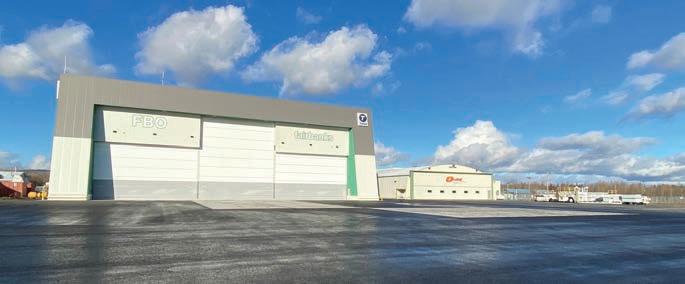
“We actually have two redundant [heating] systems, either one can heat the hangar, but you turn them both on and you can pull in a frozen plane covered in snow and an hour later it’s warm to the touch. We have the capacity to put any kind of private jet inside our hangar, and being 40-below, even if you are on a tech stop, sometimes you don’t mind keeping the airplane warm.”
Omni also has an older facility nearby with a 10,000-sq-ft hangar and a door height of 17 feet where it can shelter smaller aircraft and its ground service equipment fleet. It is connected to an unused 2,500-sq-ft former ticketing area, which the company occasionally leases out as temporary space for engineering and support staff in instances of aircraft cold weather testing. That hangar also includes additional crew lodging with a two-bedroom apartment complete with a bathroom, kitchen, and laundry facilities.
While Omni’s employee roster can swell
to 100 during the peak commercial airline handling season, the FBO has a year-round sta of 14, trained through the NATA Safety 1st program as well as in commercial airline safety procedures.
FBO Fairbanks occupies nearly six acres at PAFA and its ramp—which is configured to handle large aircraft from the C-17 on down— has 16,000 sq ft of concrete hardstands in addition to the regular asphalt pavement. It will soon add another five acres of leased ramp space contiguous with its own. Plans call for Omni to add a 20,000-sq-ft cargo and ground service equipment maintenance facility over the next few years.
As the FBO develops its clientele, Michel looks for his sta to provide superior customer service even if it means quickly sourcing caribou or moose meat from a local smokehouse for customers. He noted an instance when a client visiting on a fishing trip returned empty-handed. Michel happened to have some recently-caught frozen salmon on hand, which he pulled out and sent on its way with the disappointed angler.
“We’re a small town and everyone here is very friendly,” he told AIN. “We want that to be portrayed in the way we handle our customers. We want that aircraft to leave happy and wanting to come back to Fairbanks.” C.E.

NetJets broke ground November 15 on a maintenance and customer facility in Scottsdale, Arizona, one of the top destinations for the company’s fractional aircraft shareowners. The “exclusive-use” facility—expected to open in first-quarter 2024—will include a private boarding lounge and ramp space, as well as serve as one of the company’s more than 10 maintenance hubs that support NetJets’ fleet of more than 850 business jets. At 42,000 sq ft, the facility includes 30,000 sq ft of hangar space and 12,000 sq ft for offices and a passenger terminal. Along with the facility, NetJets expects to create more than 200 jobs in Scottsdale. As part of its maintenance operations, NetJets invests more than $63 million annually in aircraft spare parts, including the 753,000 it currently has on hand.
Business aviation maintenance services provider Jet Support Services Inc. (JSSI) has added a second private-equity partner with a “significant” investment from Genstar Capital. Details of the investment were not disclosed, but JSSI CEO Neil Book said it will fund the company’s next phase of expansion.
“As we start this next chapter, Genstar is an ideal partner, with a tremendous track record, to support our ambitious growth plan,” said Book, whose family is among the JSSI investors that also includes private equity firm GTCR. “My team and I are appreciative for the ongoing collaboration with GTCR, which has been a fun and rewarding partnership since 2020,” he added. This investment follows Chicago-based JSSI’s acquisitions last year of aircraft maintenance-tracking companies Traxxall and SierraTrax, and prior to that, GTCR’s investment in 2020.
Keystone Turbine Services (KTS), a unit of Atlanta-based Precision Aviation Group, has successfully correlated and certified both of its all-digital engine test cells to support the Rolls-Royce RR300 series of gas turbine engines. The development builds on Pennsylvania-based KTS’s OEM-approved aftermarket MRO services on the Rolls-Royce M250 and RR300 engines, as well as module, accessory, component, spare parts, and field service support in addition to Honeywell and Triumphrelated accessories. KTS also has invested more than $3.5 million to acquire two complete RR300 rental engines along with additional spare compressors, gearboxes, and turbine modules.
MRO provider Summit Aviation has completed the move of its North Carolina operation to a 49,000-sq-ft building in Greensboro. The Delaware-based company—created by Greenwich AeroGroup after retaining the manufacturing operations of Atlantic Aero in its divestiture to Landmark Aviation—gains 19,000 more square feet with the move from its former location in Kernersville. “The increased space provides us with the opportunity to expand our capabilities and add new machinery that allows us to serve our aviation and other types of industry customers in a capacity we haven’t been able to do prior to this move,” said Summit Aviation Greensboro manufacturing director Garrett Wishon. New machinery at Summit includes a large five-axis mill that enables technicians to machine components such as landing gear, leading edges, and wing spars up to 12 feet long. The building also features an open floor plan that allows the company to create an optimal flow for lean manufacturing.

Bill Pribe had no idea what was about to happen.
In November 2008, the maintenance manager of the Cessna Citation Service Center in Toledo, Ohio, returned to his job after Thanksgiving break only to learn that he was laid off. A couple of months later, Cessna announced it was closing the center.
Pribe was 53 at the time and began looking for a new job. At the same time, the business aviation industry was in the throes of the Great Recession, so job opportunities weren’t plentiful.
Eventually, he called Dave Corwin, owner of Turbine Standard, an engine shop, to see if his company had any openings. Corwin, whose shop was based near Toledo Express Airport and knew about the closing, instead asked what it would take to keep the service center open as an independent operation. “I started at the Cessna facility in October 1980,” said Pribe, who began his career at the center as a mechanic, worked in inspection, and was later promoted to team lead, supervisor, and then manager. “I had gone through the whole system. I knew how the system operated.”
Corwin and his then-partner Randy Carsten gave Pribe the green light—and the necessary financing—to open an independent MRO. “He said, ‘Do it, but don’t lose any money,’” said Pribe, who is Toledo Jet’s general manager.
Thus, in April 2009 Toledo Jet was born. It began operations out of the hangar of Express Avionics, which was owned by Corwin’s brother, Tom. Shortly thereafter, Express merged into Toledo Jet, which combined provides a range of airframe maintenance, complete avionics installations, inspections, non-destructive testing, import and export assistance, and advanced systems troubleshooting.
Since Bill Pribe started Toledo Jet as an independent Citation specialist, the company has grown to employ 25 people full-time, many with decades of Citation experience.
After the company received its FAA repair station certificate, Pribe and Corwin worked with the port authority to lease the facilities of the former Citation service center, all 39,388 sq ft that it continues to occupy. Since then, Toledo Jet has grown from nine full-time employees to 25, many of whom have decades of Citation experience. “We’ve got just a really good, knowledgeable group of guys,” Pribe said.
He estimated that 95 percent of its work is on Citation jets: 550s, 560s, Citation Xs, Sovereigns, Latitudes, “and a little bit of Longitudes.” Most of that work comes from corporate and individual Citation operators who previously used the service center, as well as a major fractional-ownership company that Pribe credits with Toledo Jet’s longevity. “We’re here now because we have them (the fractional company) as a customer,” he added.
Around 2012, Toledo Jet expanded to Fort Lauderdale Executive Airport in Florida. The operation there employs 10 and is co-located with Turbine Standard. It primarily supports general aviation aircraft, Pribe explained. With the increase in private flying since Covid, Toledo Jet’s business has been strong. “Right now, we are basically booked through…most of February,” Pribe estimated in November.
He recalls a moment in the early days of Toledo Jet when he was working on a jet at 2 a.m. and wondering if the business was going to work. Thirteen years later and with a lot of help from Corwin and the company’s employees, it has.
“A lot of people did a lot of work,” Pribe said. “Getting a business o the ground was not high on my list of things to do, but at some point in time, you do what you have to do. It’s been very rewarding.” J.S.
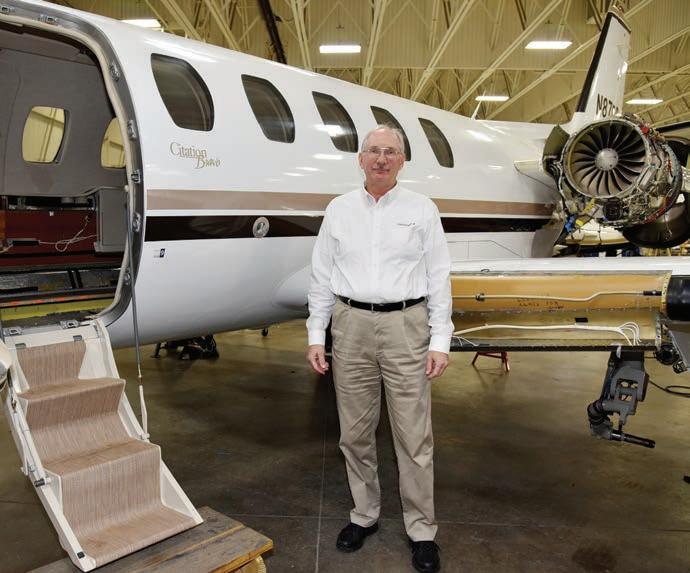
material on this page is based on reports by the o cial agencies of the countries having the reponsibility for aircraft accident and incident investigations. It is not intended to judge or evaluate the ability of any person, living or dead, and is presented here for informational purposes.
Agusta AW139, Sept. 24, 2022, Houma, Louisiana
Both pilots and all four passengers were able to evacuate the aircraft without injury after the crew successfully managed a series of equipment failures that first filled the cockpit with smoke, then obstructed operation of the flight controls while simultaneously rendering engine controls inoperative, leaving both engines running at maximum continuous power. The Part 135 charter flight was just seven minutes from landing at Houma Airport in Louisiana when the smell of burning plastic was noticed throughout the helicopter. Initially, no smoke was apparent, there were no caution lights or abnormal instrument indications, and flight characteristics remained normal. The pilots turned off the air-conditioning in case that was the source of the smell.
A few minutes later they heard “a loud ‘whoof’ noise” and “thick orange/brown smoke” began pouring from the aft portion of the overhead circuit breaker panel, quickly filling the cockpit and reducing visibility to zero. An audible low rotor warning sounded, accompanied by a rapid overspeed of both engines, as the collective spontaneously moved upward and the cyclic moved left. Opening the small ventilation window in the left cockpit door failed to clear the smoke and the helicopter’s airspeed prevented opening the door, but the left-seat pilot was able to remove his cockpit window, allowing the smoke to clear. “Significant force” was required to push the collective back down and center the cyclic. With the collective fully down, the helicopter quickly climbed 3,500 to
4,000 feet as main rotor speed (NR) gradually recovered to 100 percent, both engines indicating 145 percent power. “Full body weight” was required to keep the collective down. Unable to make the helicopter descend with normal control inputs, the crew switched one engine to flight idle. NR decreased from 100 percent to the upper 70s.
Switching the engine back to flight condition helped restore main rotor rpm, but made forward cyclic the only way to force the helicopter to descend. This in turn built indicated airspeed to 170-186 knots during the descent from 6,000 to 1,000 feet. The left-seat pilot declared an emergency and requested fire and emergency medical services. Still unable to control engine power in manual mode, the crew set up for an autorotation with the No. 2 engine in idle mode. NR rapidly decayed to 75 percent after No. 1 was also switched to idle, so the pilots broke off the first approach, returned No. 1 to flight status, and went around. On the second approach, they switched No. 1 back to flight status each time NR dropped to 70 percent and then back to idle when it reached 85 percent, thereby slowing to a safe speed while descending to 50 feet. They then entered autorotation with both engines at idle, landed on the runway with forward airspeed, and skidded off into the grass.
Subsequent examination found chafing and burned insulation on a 30-volt, 300amp cable in the overhead panel that had been incorrectly routed above rather than below its support bracket, exposing it to contact with rivets on the C3 collective torque tube. In response, the manufacturer issued Emergency Alert Service Bulletin No. 139-731 calling for borescope inspections to identify misrouted cable assemblies, inspection of any affected cables and
associated torque tubes, and replacement of any support brackets with incorrectly oriented retaining clips. The following day, EASA issued an AD mandating compliance with this service bulletin.
Bell 206B, Oct. 6, 2022, near Maitland, New South Wales, Australia
The Australian Transport Safety Bureau's (ATSB’s) preliminary report o ff ered no clear insights into why the helicopter crashed onto the bank of the Hunter River, killing the solo pilot and destroying the aircraft. The accident occurred in good visibility during daylight hours, well under the lowest reported cloud layers, with winds of eight knots. Initial examination of the wreckage found no pre-impact defects in the powerplant, flight controls, or airframe; a fuel spill at the accident site ruled out fuel exhaustion, and the fuel filter bowl showed no evidence of contamination. A series of course reversals and both lateral and vertical excursions from the charted VFR corridor remain unexplained.
The 1970-model helicopter, registered in Australia since 1986, was being returned to its owner in Warnerville, NSW after extensive maintenance at the Casino Airport to repair hail damage and replace life-limited components. The ferry pilot, holder of a commercial certificate with low-level helicopter rating, a current Class 1 medical, and current flight review, lifted off from Casino at about 1350 local time. At Wirragdurie, he entered the charted VFR corridors through restricted areas R583B and R578E, which provide 2-3 nm lateral clearance under ceilings of 2,500 and 1,600 feet, respectively. At 15:47, approaching the border between the two, he answered a phone call from a
relative and said the helicopter was flying well, operations were normal, and he was five minutes from the Maitland airport and 20 minutes from Warnerville.
Nine minutes later and about 4 nm from the end of the corridor, the helicopter made a hard right 180-degree turn and backtracked northbound while climbing into restricted airspace, reaching 3,100 feet before descending back to 1,100. At Hilldale it made another right turn, departing the west side of the corridor in a climbing turn around a hill and reaching 2,900 feet while crossing through the corridor to the west. It descended to 120 feet agl over the town of Vacy before climbing once again and turning south parallel to but still outside the VFR corridor. At 1616 it cleared a ridge by about 200 feet, then began a shallow descent toward the Hunter River. Six witnesses described seeing it roll hard and descend into the riverbank. Examination of the wreckage and a tree struck by the helicopter indicated that it crashed in an 80-degree right bank and 60-degree noselow attitude.
Beech E90, Oct. 18, 2022, Marietta, Ohio
Both pilots, the airplane’s only occupants, were killed when the twin-engine turboprop crashed into the parking lot of an automobile dealership near the end of a short Part 91 positioning flight. All communications with air traffic control were normal during the 75-nm flight from Columbus, Ohio, to Parkersburg, West Virginia. The King Air was on a three-mile final on the RNAV approach to Runway 21 and cleared to land when eyewitnesses saw it abruptly depart from controlled flight into a near-vertical spin into the ground. Security camera footage corroborated those accounts.
Numerous pilot reports of trace to moderate icing were recorded in the area, and satellite data indicated supercooled water droplets in clouds from about 1,300 to
8,000 feet above the ground. A post-crash fire “totally consumed” the fuselage above the floorboards, making it impossible to determine the status of the pneumatic anti-icing system.
Airbus Helicopters AS350B2, March 17, 2022, Sept-Îles Airport, Quebec, Canada
The helicopter struck the frozen surface of the Baie des Sept Îles while attempting a precautionary landing after the windshield abruptly frosted over at an altitude of 300 feet. The helicopter had been parked outside overnight with the windshield uncovered; before takeoff, a combination of hot air from the cabin heat and one-third of a gallon of automotive windshield washer fluid were used to clear the rime ice that had accumulated. The pilot was attempting to maneuver closer to the Île du PèreConan when the helicopter hit the ice, pitched forward, and rolled onto its left side. The pilot and passenger were able to evacuate the wreckage without injury and were rescued by snowmobile after the pilot contacted family members via mobile telephone.
Piper PA-31T, June 5, 2020, Eatonton, Georgia
Radar track data suggest that “the airplane likely was not being actively controlled” when it diverged from a gentle left turn in instrument conditions to a hard right bank that reached 120 degrees and entering a descent that eventually accelerated to 7,000 fpm. Turbulence from nearby convective activity likely delayed the pilot’s recognition that the autopilot had disengaged and “made it difficult for the pilot to
recognize and recover from the fully developed unusual attitude.” He, the student pilot in the right seat, and three passengers were killed when the airplane plunged to earth from its cruising altitude of 26,000 feet. Witness statements, some corroborated by cell phone footage, described the airplane descending “in a flat-spin-type of motion” with fire “occurring on both sides of the fuselage near both wings” and parts of the airplane separating during the descent. Fire subsequently destroyed most of the fuselage, including the autopilot controller. Both outer wing sections had separated during the descent.
The accident occurred just over one hour into a planned two hour 36-minute flight from Williston, Florida, to New Castle, Indiana. The pilot filed an IFR flight plan and obtained a weather briefing via ForeFlight about an hour and a quarter before departure; the briefing included convective Sigmets along its route of flight over central and northern Georgia and Airmets for instrument conditions and turbulence. It did not include assessments of current or future icing potential, which predicted a high probability of icing conditions including supercooled liquid droplets around the time of the accident. Archived weather radar showed that in the three minutes before the upset, the Cheyenne was operating in an area of supercooled droplets and ice crystals, creating “the potential for moderate to severe icing conditions,” as well as “general air-mass thunderstorms with the potential for structural icing above the freezing level at 15,000 feet.”
Get the latest bizav news ! The latest news, data, and analysis on the future of civil aviation.

Jan. 23, 2023
The FAA is extending the duration of aircraft registration certificates from three years to seven years. Initial Certificates of Aircraft Registration will expire seven years from the month issued. In addition, the FAA is applying this amendment to all aircraft currently registered so owners won't have to reregister until reaching the seven-year mark. This rulemaking also makes other minor revisions to rules related to internal FAA registration processes. The final rule becomes e ective on Jan. 23, 2023.
Feb. 13, 2023
This notice of proposed amendment (NPA) proposes to mandate the installation of a crash-resistant fuel system (CRFS) onto existing rotorcraft designs that are still in production and the retrofit of existing rotorcraft that are operated in EASA member states. The objective of the CRFS NPA is to mitigate the risks linked to a postcrash fire involving rotorcraft.
May 31, 2023 and Nov. 30, 2023
The European Commission has delayed the onset of new passenger reporting requirements that were previously scheduled to start on Sept. 30, 2022. EES (Entry/ Exit System), designed to replace the current system of manual stamping of passports with an electronic record, is now scheduled to start a transitional phase in May 2023. Manual stamping of passports will end in mid-August 2023, and the transitional phase will end in February 2024. ETIAS (European Travel Information and Authorization System) is an online pre-travel, and pre-boarding, requirement applying to visa-exempt third-country nationals planning to travel to European states. It is expected to be implemented in November 2023.
The National Fire Prevention Association (NFPA) is granting a 24-month extension to the compliance deadline of its standards that call for airport fueling vehicle loading racks to be equipped with automatic shutoff devices that are compatible with fueling trucks. This extension to June 2, 2023, applies only to airports that adopted the 2022 revision of NFPA 407. The original compliance date of June 2, 2021, still applies for airports operating under the 2017 revision. The National Air Transportation Association (NATA) is working with the FAA as to how the extension will affect current enforcement policy at Part 139 certificated airports.
June 7, 2023
The ADS-B Out requirement in Europe is Dec. 7, 2020, for aircraft receiving their certificate of airworthiness (C of A) on or after December 7. Aircraft that obtained their C of A between June 6, 1995, and Dec. 7, 2020, must arrange for retrofits to meet the ADS-B Out mandate by June 7, 2023. Both deadlines apply only to aircraft with an mtow exceeding 5,700 kg (12,566 pounds) or having a maximum cruising true airspeed capability greater than 250 knots. Aircraft with a C of A dated before June 6, 1995 are exempt from European ADS-B requirements.
June 12, 2023 and Sept. 9,
By June 12, 2023, operators under Parts 91, 91K, and 135 must complete submissions of reports to the pilot records database (PRD) of all historical records concerning training, alcohol testing, qualification, proficiency, and disciplinary actions dating on or after Jan. 1, 2015. Final compliance date for reporting historical records before Jan. 1, 2015, is Sept. 9, 2024. Also beginning on Sept. 9, 2024, the Pilot Records Improvement Act ceases to be effective and will not be an available alternative to PRD for operators, entities, or trustees to which these regulations apply.
As part of an interim final rule overhauling aviation maintenance technician school regulations (Parts 65 and 147), the FAA is transitioning from using the mechanic practical test standards (PTS) as the testing standard to obtaining a mechanic certificate. As a part of this transition, the FAA developed the mechanic airman certification standards (ACS), which adds task-specific knowledge and risk-management elements. The FAA will use the PTS as the testing standard until July 31, 2023. Starting Aug. 1, 2023, the FAA will use the ACS to conduct mechanic certification tests.
Aug. 10, 2023 and May 16, 2024
Due to continued supply chain impacts stemming from the Covid pandemic, the previously announced implementation dates for ADS-B Out in Canada is delayed beyond the original date of Feb. 23, 2023. As a result, the mandate will come into effect as follows: Class A Canadian airspace on Aug. 10, 2023; Class B Canadian airspace on May 16, 2024; and Class C, D, and E airspace to occur no sooner than 2026. The new dates have been developed from stakeholder feedback regarding supply chain limitations and backlogs to acquire and install the appropriate equipment.
Starting on Dec. 2, 2022, EASA Part 145 maintenance organizations were required to meet revised regulations. However, there is a two-year transition period, to Dec. 2, 2024, to allow maintenance organizations to correct any findings of non-compliance with the new Part 145 requirements. The main change introduced in the regulations is the required implementation of a safety management system. SMS requires maintenance organizations to implement hazard identification, risk management and safety assurance processes, and the designation of a safety manager. To support the safety management system processes, several organization requirements have been changed including the safety policy, internal occurrence reporting, competence of staff, and compliance monitoring (that replaces quality assurance).
For the most current compliance status, see: ainonline.com/cc

Leverage the experience and resources of Duncan Aviation. Put 66+ years, more than 2,500 team members worldwide, and the experience that comes with more than 3,500 aircraft transactions to work for you.
www.DuncanAviation.aero/aircraftsales AircraftSales@DuncanAviation.com
Precise Flight promoted Bill Hoback to COO. Hoback has served with Precise Flight for more than a decade, starting out in sales and most recently as general manager. Before joining Precise Flight, Hoback worked for Cessna Aircraft in assembly, quality, flight line, customer service, and special projects.

Richard Ziskind has been appointed chief commercial officer of Alerion Aviation. Ziskind has more than 30 years of experience in the aviation industry, having most recently served as v-p and managing director for Crystal Luxury Air. Before that, he held senior positions with airlines, private jet companies, and special aircraft platforms for large commercial programs, international government entities, and heads of state.
Robert Thor Dranitzke has joined Solairus Aviation’s executive management team. Dranitzke brings 25 years of operational, financial, and executive leadership experience across the aviation industry, having most recently co-founded Milestone Aviation Group, where he also served as managing director and executive v-p of commercial. In addition, he previously held the role of COO at NetJets Europe and currently serves on the board of Omni Helicopters International.
Silver Air promoted Chuck Stumpf to president of sales and acquisitions. Stumpf has more than two decades of experience in business aviation and joined Silver Air in 2014, previously serving as president of business development. Before that, he founded and served as president of his own private jet sales, acquisitions, and consulting services company.

The Aeronautical Repair Station Association (ARSA) board of directors elected Josh Krotec , senior v-p of First Aviation Services, to serve as its 2023 president. Krotec succeeds Terrell Siegfried—assistant general counsel and corporate secretary of Nordam—who will remain on the board. Krotec has been engaged in the association’s volunteer leadership for several years, serving as government affairs chairman before his election to the board in 2019.
Additionally, Gary Fortner, v-p of engineering for Fortner Engineering & Manufacturing, was elected for the third time to serve as ARSA v-p; Bob Mabe, director of regulatory compliance for Haeco Americas, will serve as the association’s treasurer; and Rob Roedts, Columbia Helicopters v-p of aircraft solutions, and Jonathan Silva , president and CEO of AeroKool Aviation, were elected to initial one-year terms on the board.
RTCA named NBAA COO Chris Rocheleau to its board of directors, succeeding outgoing NBAA COO Steve Brown. Rocheleau joins Kerry Buckley, v-p for Mitre’s Center for Advanced Aviation System Development, as new members.
The Aerospace Industries Association (AIA) announced new appointments to its executive committee for 2023. AIA elected Tom Gentile, president and CEO of Spirit AeroSystems, to serve as chairman of the board of governors and Theodore “Ted” Colbert III , executive v-p of Boeing and president and CEO of Boeing Defense, Space, and Security, to serve as vice chairman. Eric Fanning has been reelected as AIA president and CEO.

Brett Pierson was promoted by Textron Aviation to the role of senior v-p of defense and special missions, which includes serving as president and CEO of Textron Aviation Defense. Pierson had been v-p of defense strategy and sales for the past two years and will succeed Tom Hammoor, who is retiring after serving in the role for seven years. Pierson is a former Naval officer and pilot who joined Textron Aviation Defense in 2017 as a senior test pilot.
Crystal Gordon was appointed by Gogo as executive v-p, general counsel, and secretary, succeeding Margee Elias, who is retiring. Gordon’s aviation career spans more than 20 years, including similar roles at Era Helicopters and Air Methods. She joins Gogo from Bristow Group, where she served as senior v-p, general counsel, head of government affairs, and corporate secretary since 2020.
Heads Up Technologies hired Eric Canal as v-p of engineering. Canal has previously held leadership positions with aerospace companies, including 12 years at Panasonic Avionics developing in-flight entertainment, connectivity, and cabin systems (IFE&C). He also spent 13 years at Thales.

The National Air Transportation Association (NATA) appointed Alan Stephens , as v-p of regulatory affairs succeeding John McGraw Stephens was formerly FAA Flight Standards acting deputy director of the office of air carrier safety assurance. McGraw will assume a new role within the organization as senior advisor of security.
Mark Duebner was appointed by JSX as v-p of corporate real estate and airport affairs. Duebner has more than 25 years of experience, most recently serving as director of the city of Dallas’s aviation department, overseeing Dallas Love Field, Dallas Executive Airport, and Dallas Vertiport for the past 12 years.
The Colorado Aviation Business Association (CABA) appointed Michael Caflisch, founder of Strategy1 Advisors, as its executive director. Caflisch brings more than 40 years of industry experience to CABA, having spent 26 years with Boeing in numerous roles and leading Aircraft Performance Group as its CEO.
Stevens Aerospace and Defense Systems promoted Travis Fleshman to general manager and John Harris to maintenance manager of its Greenville, South Carolina facility. Fleshman joined Stevens in 2014 as a mechnic and then maintenance manager. Harris hired on in 2004 and has served as mechanic, crew lead, and technical service representative.
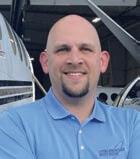
Clint Bloom and Jennifer Skelton were hired by Gulfstream Aerospace as regional sales managers for customer support. Bloom has more than 22 years of aviation experience, spending the last seven in corporate aviation maintenance, repair, and overhaul sales. Skelton brings more than 15 years of aviation experience to Gulfstream, specializing in supply chain, sales, and customer service. z
James “Jim” C. Ladd Jr.—former chief pilot for Union Pacific Railroad, writer, and AIN contributor—passed away on October 7 at age 76. Ladd learned to fly at an early age from his father, James Sr., a WW II flight instructor and pioneer in corporate aviation. He served in Vietnam and later became a corporate pilot where he flew for more than 40 years. During his distinguished career, he had the opportunity to fly many of the earliest corporate aircraft to the most modern. Before his retirement in 2013, he helped develop the University of Omaha’s flight program and served on its board. Ladd also led the founding of the Nebraska Business Aviation Association to strengthen the presence of corporate aviation in the state. As a writer and contributor to AIN, he wrote numerous pilot reports and articles on new aircraft. Additionally, Ladd spent countless hours mentoring youth that aspired to pursue careers in aviation, o ering advice and sharing his wisdom.
Will Cutter and Cutter Aviation were inducted into the International Air & Space Hall of Fame at the San Diego Air & Space Museum. The recognition “commemorates over 94 years of commitment to aviation and the hard work and dedication of the Cutter family to the industry,” according to the company. Cutter Aviation was founded in 1928 by William P. Cutter and is now under the family’s third generation of leadership, making it the oldest family-owned and operated FBO in the world. Under Will Cutter’s direction, the family business has expanded from two locations to 11.
F. Roger Hardesty, founder of Bizjet International, was inducted into the Oklahoma Hall of Fame on November 17. Hardesty, a real estate developer and builder, began his career in concrete finishing in 1959 in Tulsa. He founded and operated more than 25 business ventures including Mid-Continent Concrete, Alliance Transportation, United States Aviation, and the Quarry Landfill. Today, the Hardesty Family owns and operates an independent FBO chain, charter services, and Black Hawk helicopter air crane businesses. As a pilot, Hardesty has logged in excess of 14,000 flight hours.
The market was buoyed by Textron Aviation, which improved on its 2021 twin-engine King Air deliveries by six aircraft; by Epic, which doubled the output of its E1000 GX from five to 10, and by Piaggio, which had one Avanti Evo delivery this year, as compared to none last year.
Piston aircraft deliveries improved by 8.8 percent this year, rising to more than 1,000 deliveries during the first nine months of the year.
The rotorcraft market also showed improvement, with turbine helicopter deliveries up by more than 7 percent compared with 2021’s first three quarters. Robinson Helicopter saw deliveries of its R66 surge by more than 20 percent this year to 74 units, while Leonardo improved on its Q3 2021 totals by nearly 17 percent, delivering 26 AW119Kxs through the first three quarters of 2022 compared with just eight a year ago.
Bell also added to its year-over-year totals by eight helicopters, handing over nine additional light single-engine 505s than it did a year ago.
Airbus Helicopters deliveries dipped by three units, from 180 in the first nine months of 2021 to 177 over the same span this year. While it increased on some models, it handed over 15 fewer H125s (previously AS350) than it did last year.
Sikorsky delivered two of its medium twin-engine S-92s during the first three quarters of the year, one less than it did in the same span of 2021.
“Demand for general aviation aircraft remains hardy as our industry continues to strategically navigate ongoing challenges, which include issues with supply chain and workforce shortages within our industry and within global regulatory authorities,” said GAMA president and CEO Pete Bunce. “Deliveries are converging on, and in some cases surpassing, the levels we were experiencing prior to the pandemic, which is a testament to the strength of our industry and the importance and utility of general aviation.” z
JAMES HOLAHAN (1921-2015), FOUNDING EDITOR, WILSON S. LEACH, FOUNDER & CEO
EDITOR-IN-CHIEF – Matt Thurber
NEWS EDITOR - AIN PUBLICATIONS – Chad Trautvetter
EDITOR AIN MONTHLY MAGAZINE – Kerry Lynch
SENIOR EDITORS – Charles Alcock – AIN/FutureFlight.aero, Curt Epstein, Gregory Polek – Air Transport, Int. Show Editions, Jerry Siebenmark, FutureFlight.aero writer/editor Hanneke Weitering
COPY/SOCIAL MEDIA EDITOR – Kait Wilson
David Donald – Defense, Mark Huber – Rotorcraft , Jennifer Leach English, David Jack Kenny – Safety Gordon Gilbert, Richard Pedicini, James Wynbrandt
PRODUCTION MANAGER – Martha Jercinovich
GRAPHIC DESIGNERS –John A. Manfredo, Grzegorz Rzekos
DIRECTOR OF VIDEO – Ian Whelan
CHIEF OPERATING OFFICER – Dave Leach
VICE PRESIDENT SALES & MARKETING – Karl H. Elken
SENIOR DIRECTOR, INDUSTRY AFFAIRS AND EVENTS– Nancy O’Brien
ADVERTISING SALES
Michelle James – Midwestern U.S., Western U.S./Western Canada/Asia Pacific, +1 (520) 343-0236 Joe Rosone – Mid-Atlantic U.S./Southeast U.S./Caribbean/Brazil, +1 (301) 693-4687 Diana Scogna – Europe/Middle East, +33 6 62 52 25 47
Victoria Tod – Northeastern U.S./Eastern Canada/Great Lakes U.S./United Kingdom, +1 (203) 733-4184 Yury Laskin – Russia, +7 05 912 1346
AUDIENCE DEVELOPMENT DIRECTOR – Eileen Silberfeld MARKETING AND CLIENT SERVICES MANAGER – Lisa Valladares
SOCIAL MEDIA MARKETING – Zach O’Brien SALES ADMINISTRATOR – Cindy Nesline
DIRECTOR OF FINANCE & HUMAN RESOURCES – Michele Hubert ACCOUNTS PAYABLE – Mary Avella ACCOUNTS RECEIVABLE – Bobbie Bing
U.S. HEADQUARTERS
214 Franklin Ave., Midland Park, NJ 07432, +1 (201) 444-5075 Advertising Inquiries: +1 (201) 345-0085, adsales@ainonline.com Circulation Inquiries: +1 (201) 345-0085, subscriptions@ainonline.com
WASHINGTON, D.C. EDITORIAL OFFICE: Kerry Lynch (business aviation): klynch@ainonline.com, Tel: +1 (703) 969-9195
EUROPEAN EDITORIAL OFFICE: Charles Alcock: calcock@ainonline.com, Tel: +44 7799 907595
Wilson Leach, Dave Leach, Jennifer Leach English, Karl H. Elken, Matt Thurber, Michele Hubert, Nancy O’Brien
Aviation International News (ISSN 0887-9877) is published twelve times per year (monthly). Periodicals postage paid at Midland Park, N.J., and additional mailing o ces. Postmaster: Send address changes to Aviation International News, P.O. Box 8059, Lowell, MA 01853 USA. Allow at least eight weeks for processing. Include old address as well as new, and an address label from a recent issue if possible. Subscription inquiries: +1 (201) 345-0085 or email: subscriptions@ainonline.com. Aviation International News is a publication of AIN Media Group, 214 Franklin Ave., Midland Park, NJ 07432; Tel.: +1 (201) 444-5075. Copyright © 2021 All rights reserved. Reproduction in whole or in part without permission of The Convention News Co., Inc. is strictly prohibited. The Convention News Co., Inc. publishes Aviation International News, AINalerts, AIN Air Transport Perspective, AINtv, Business Jet Traveler, BJTwaypoints, ABACE Convention News, Dubai Airshow News, EBACE Convention News, Farnborough Airshow News, FutureFlight.aero, HAI Convention News, LABACE Convention News, MEBA Convention News, NBAA Convention News, Paris Airshow News, Singapore Airshow News, Mobile Apps: Aviation International News; AINonline. PUBLICATION MAIL AGREEMENT NO. 40649046 RETURN UNDELIVERABLE CANADIAN ADDRESSES TO: PITNEY BOWES INTERNATIONAL MAIL, STATION A, P.O. BOX 54, WINDSOR, ON, N9A 6J5, returns il@imex.pb.com.
For feedback, letters to the editor, or other editorial needs, please contact AIN’s Editors at ainedit@ainonline.com




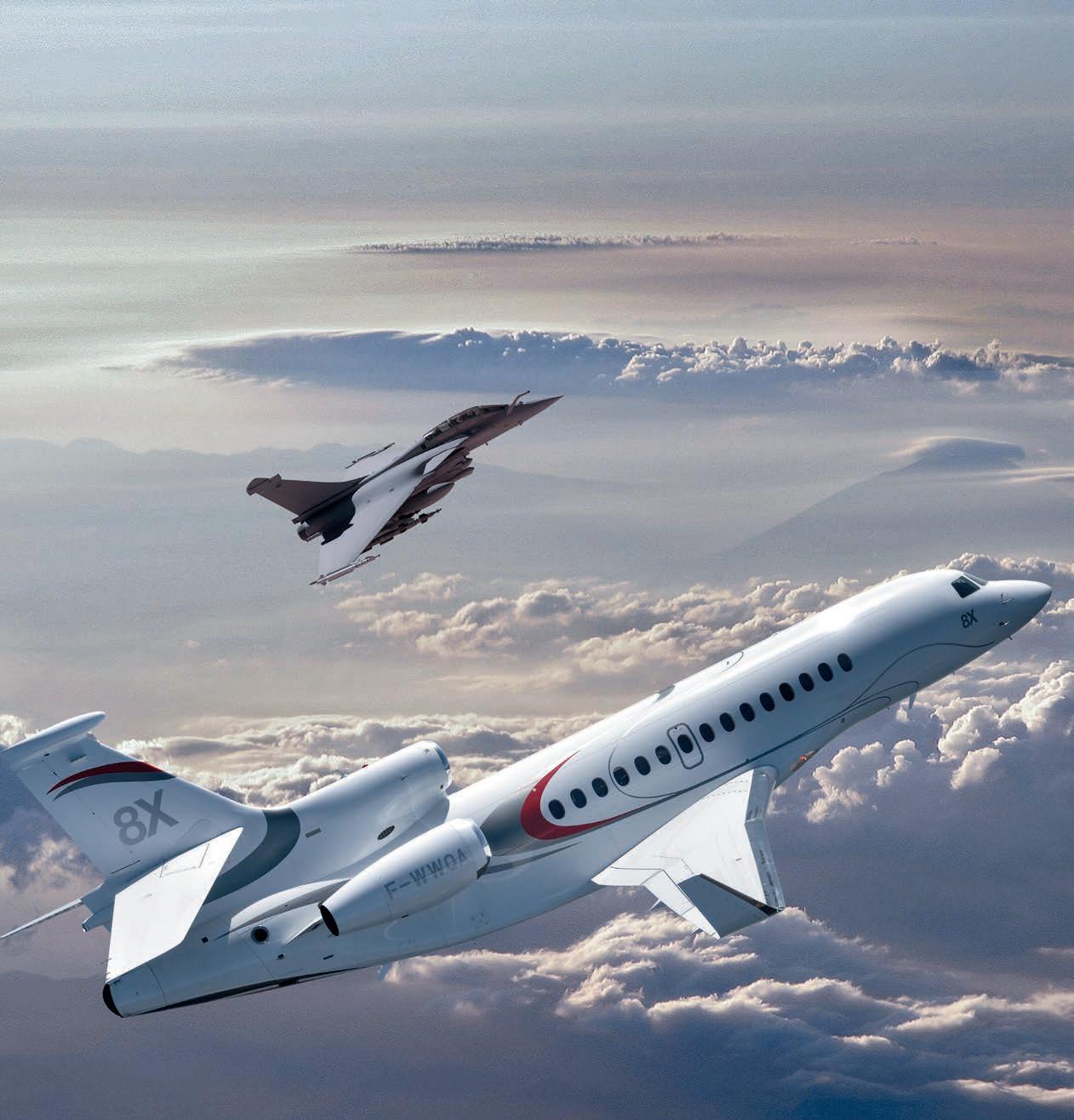
 Developed by Dassault for its fighter jets, Falcon Digital Flight Control Systems reduce pilot workload during critical maneuvers, with features like automatic trim and flight path control. It’s the safest and most advanced fly-by-wire in business aviation.
Developed by Dassault for its fighter jets, Falcon Digital Flight Control Systems reduce pilot workload during critical maneuvers, with features like automatic trim and flight path control. It’s the safest and most advanced fly-by-wire in business aviation.